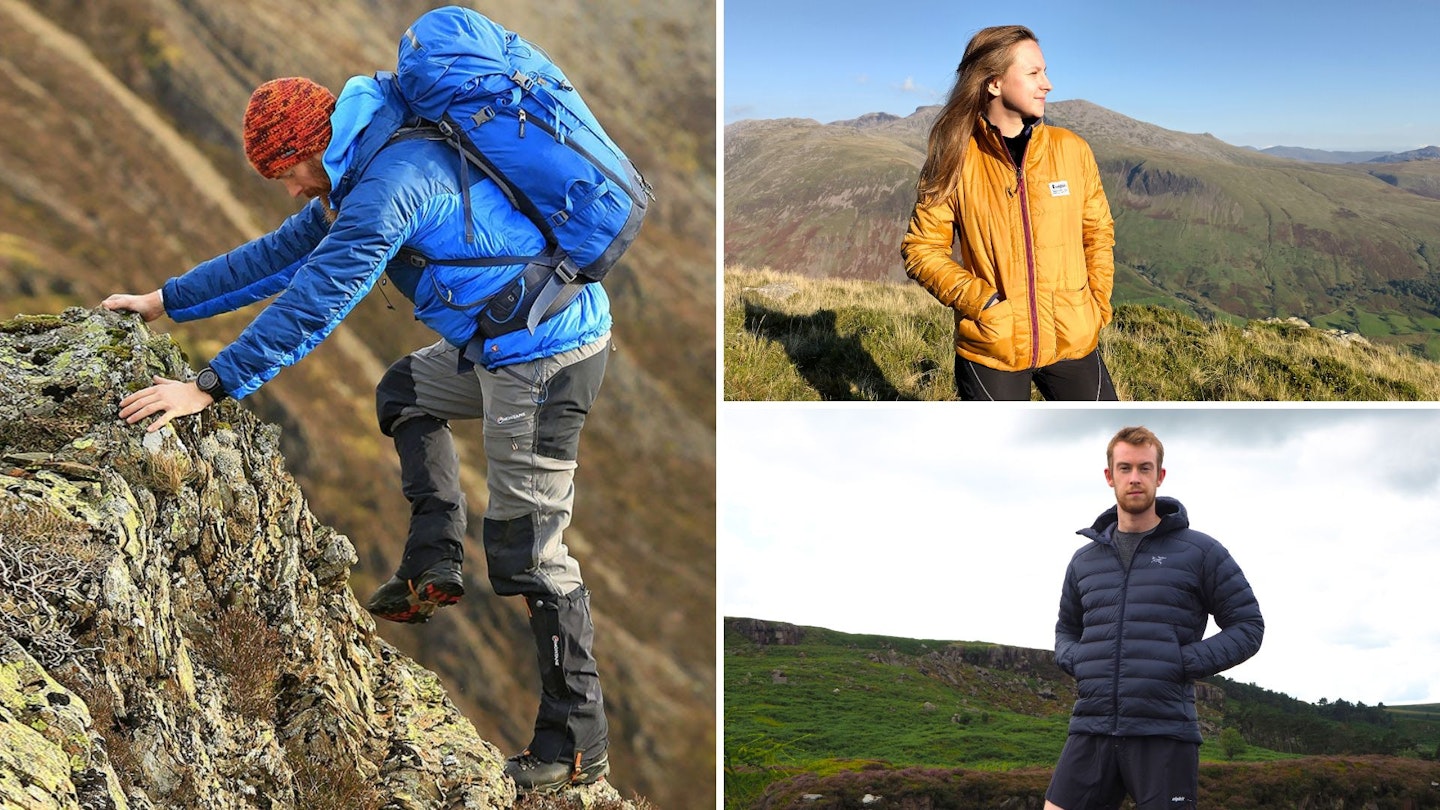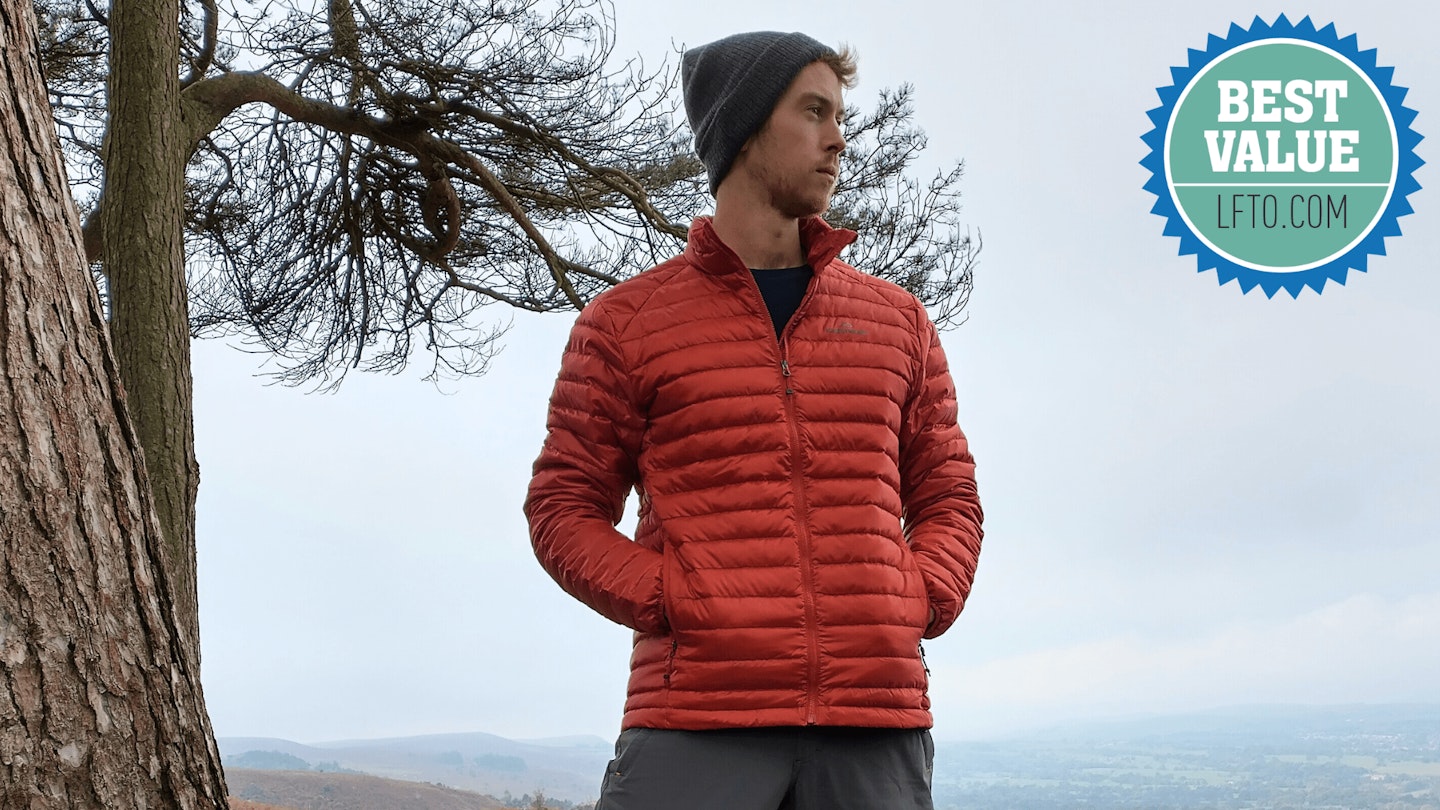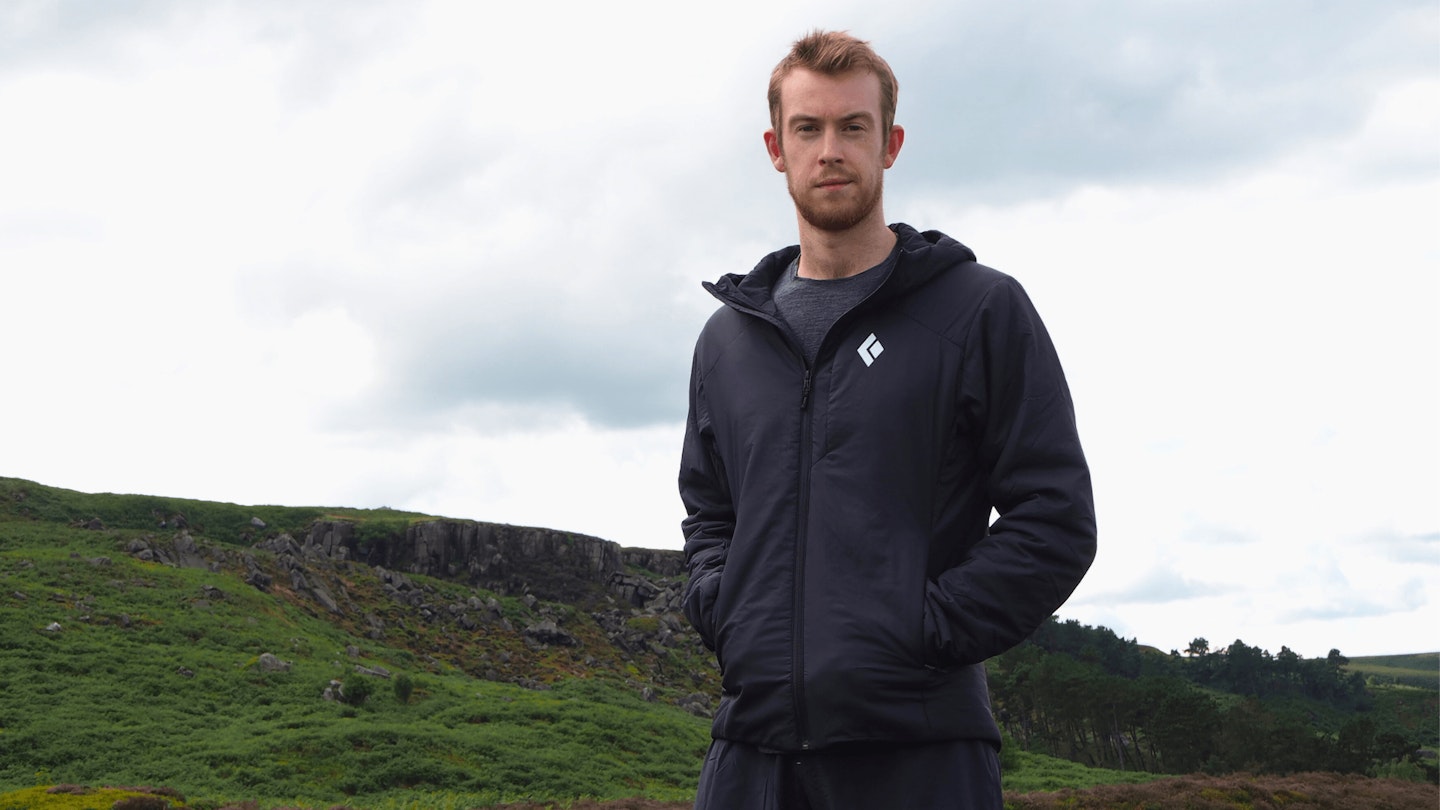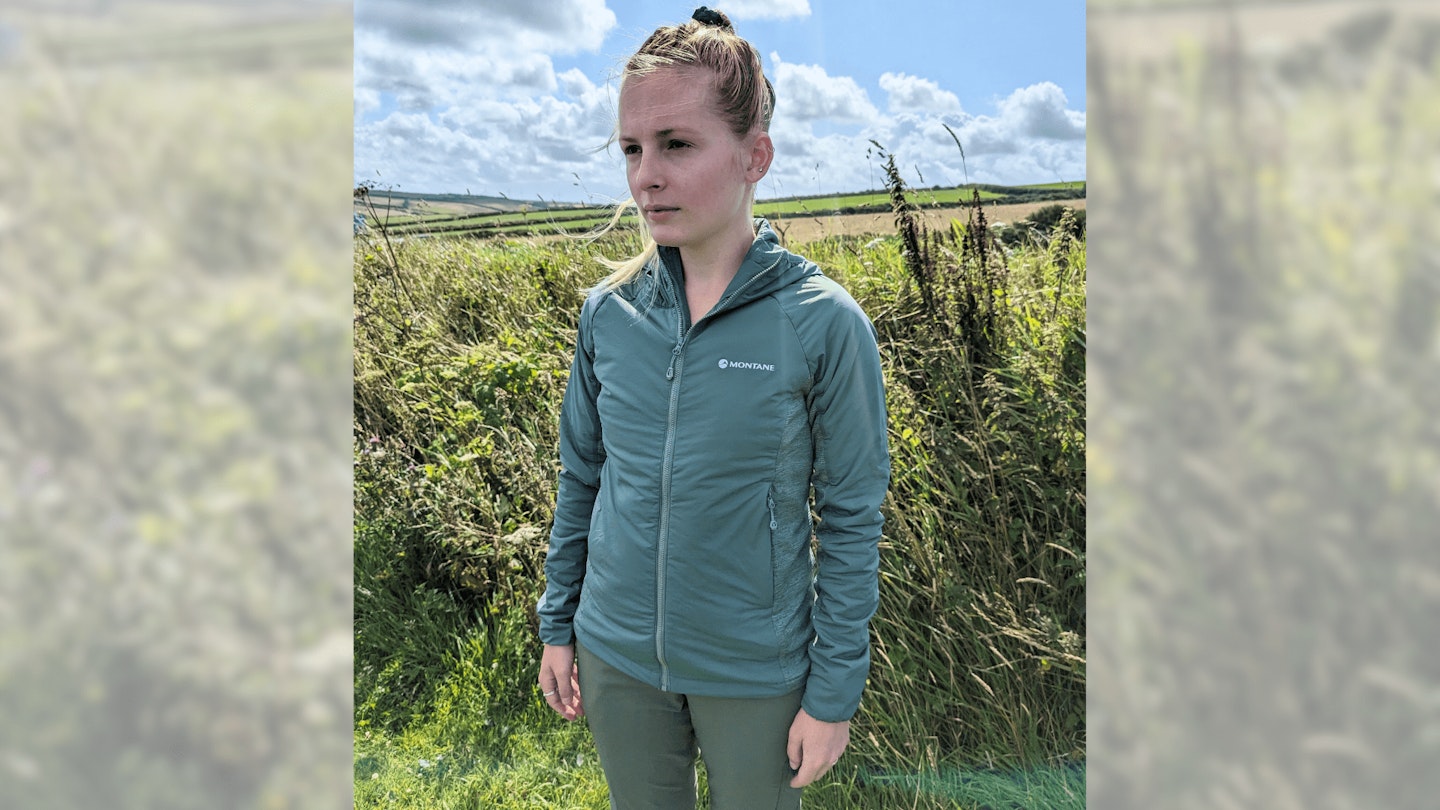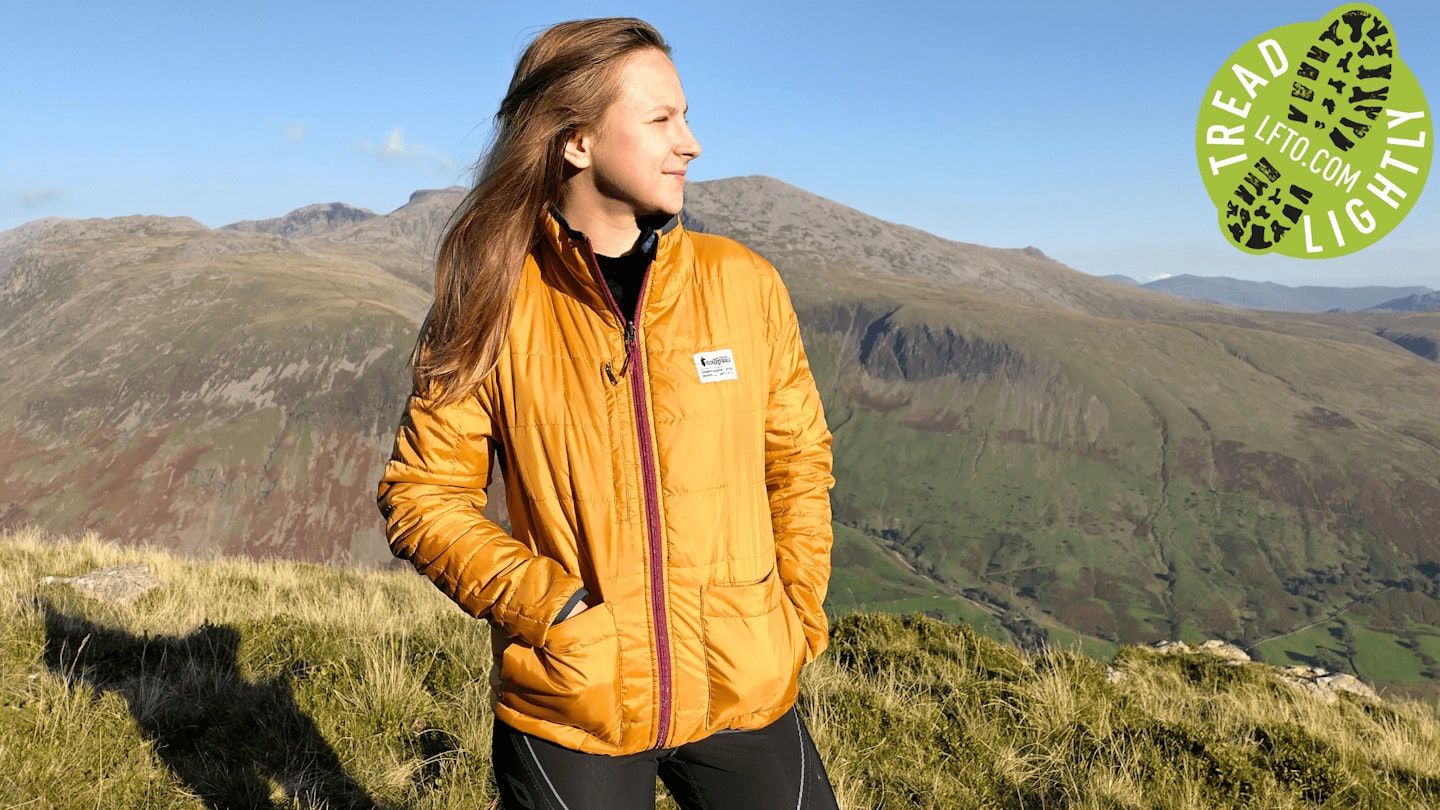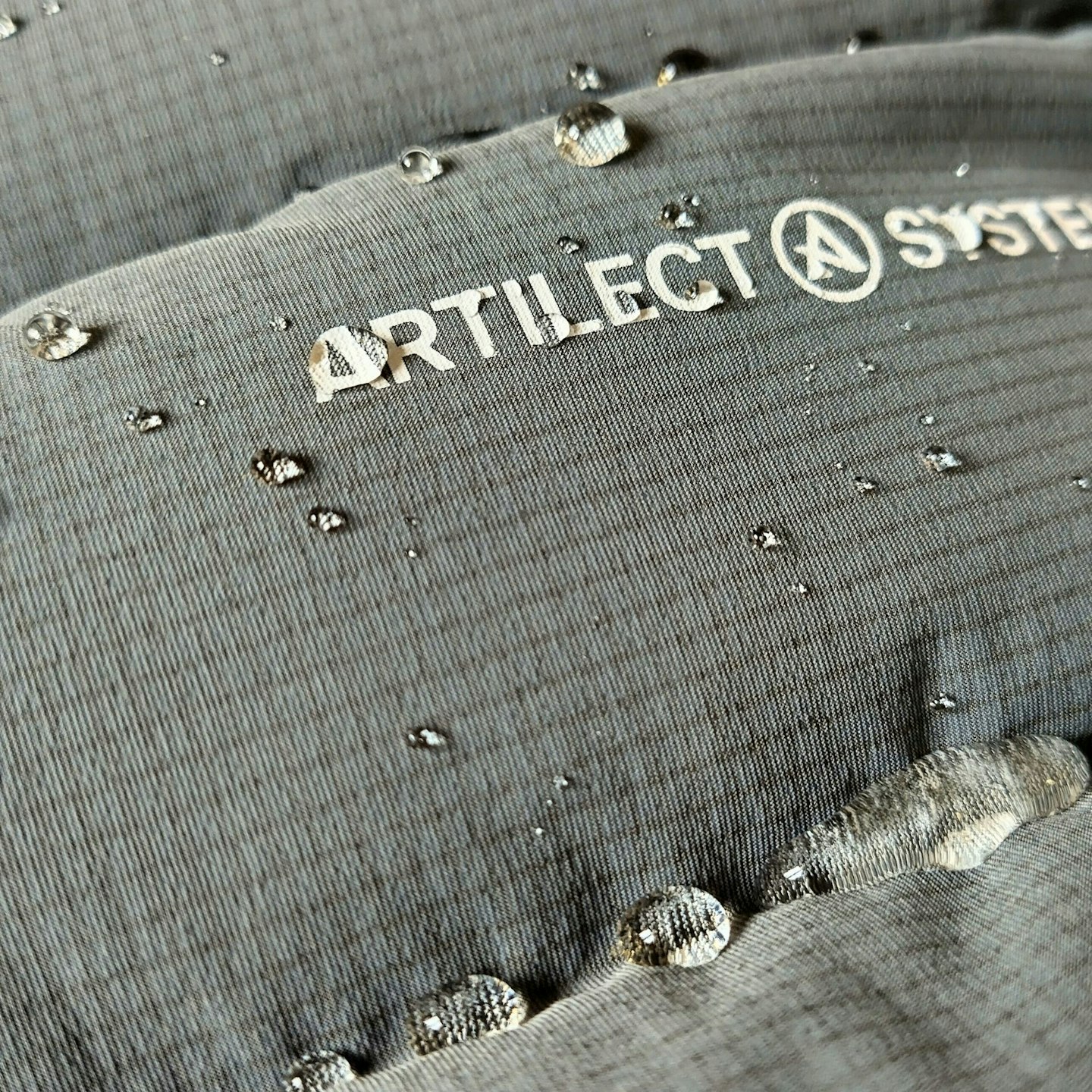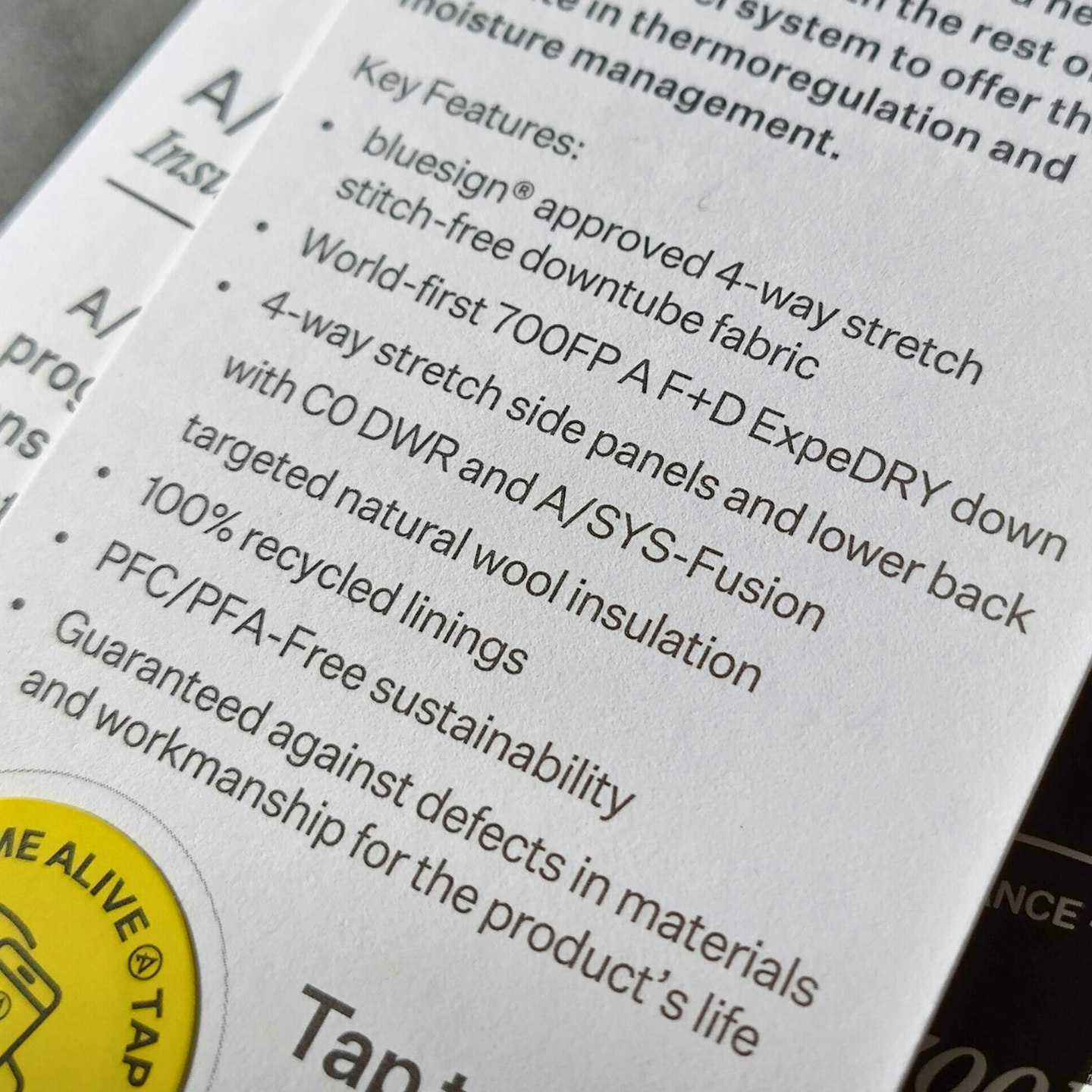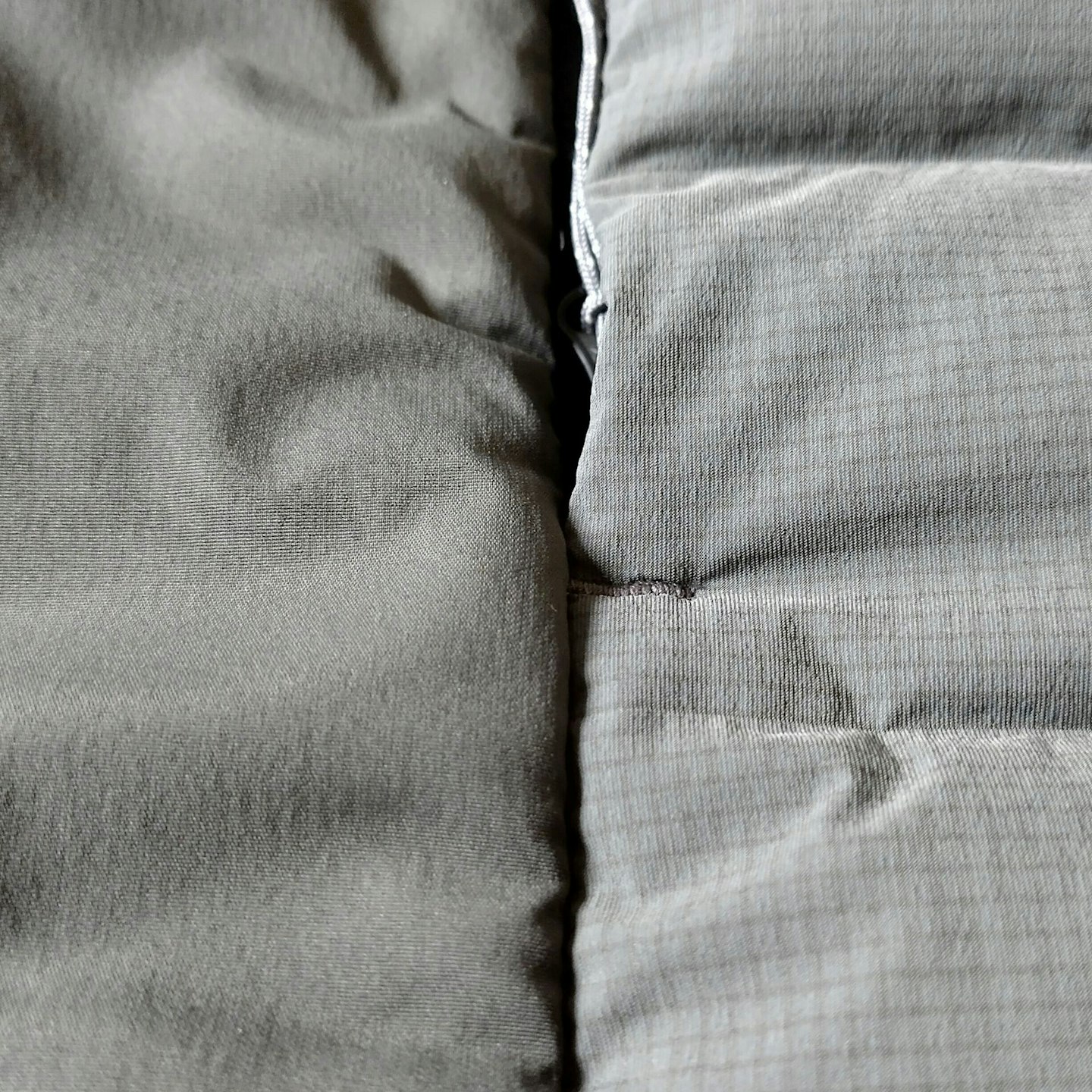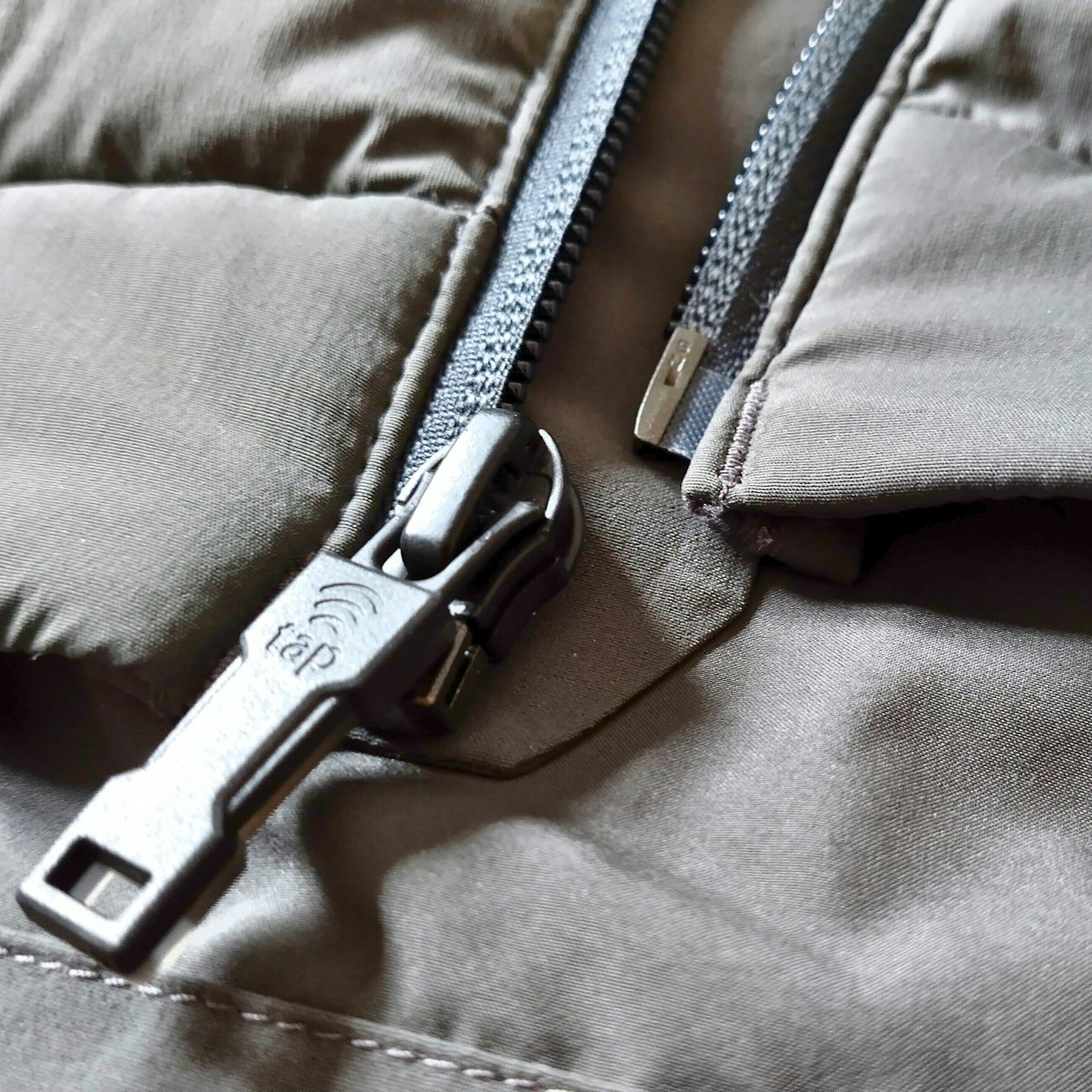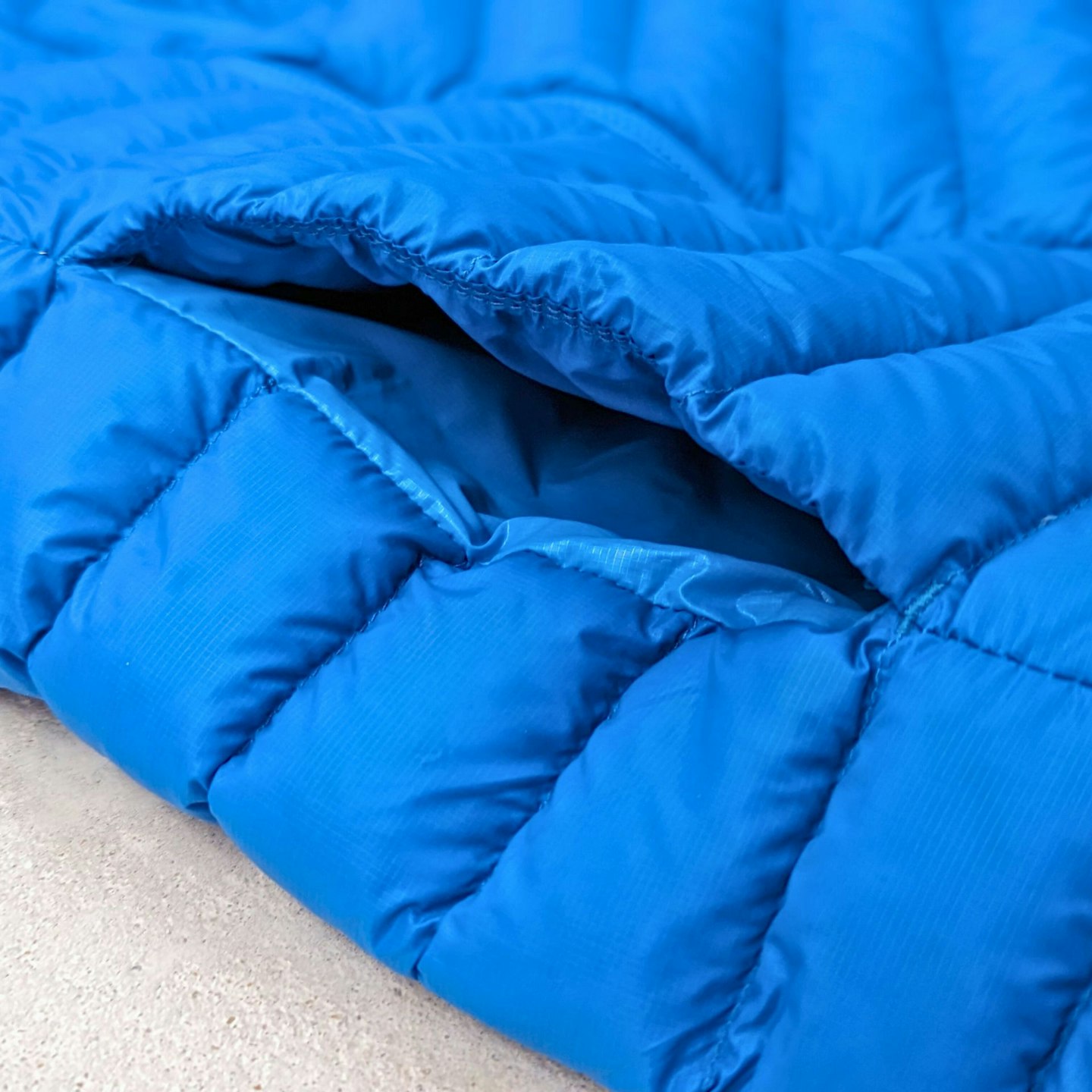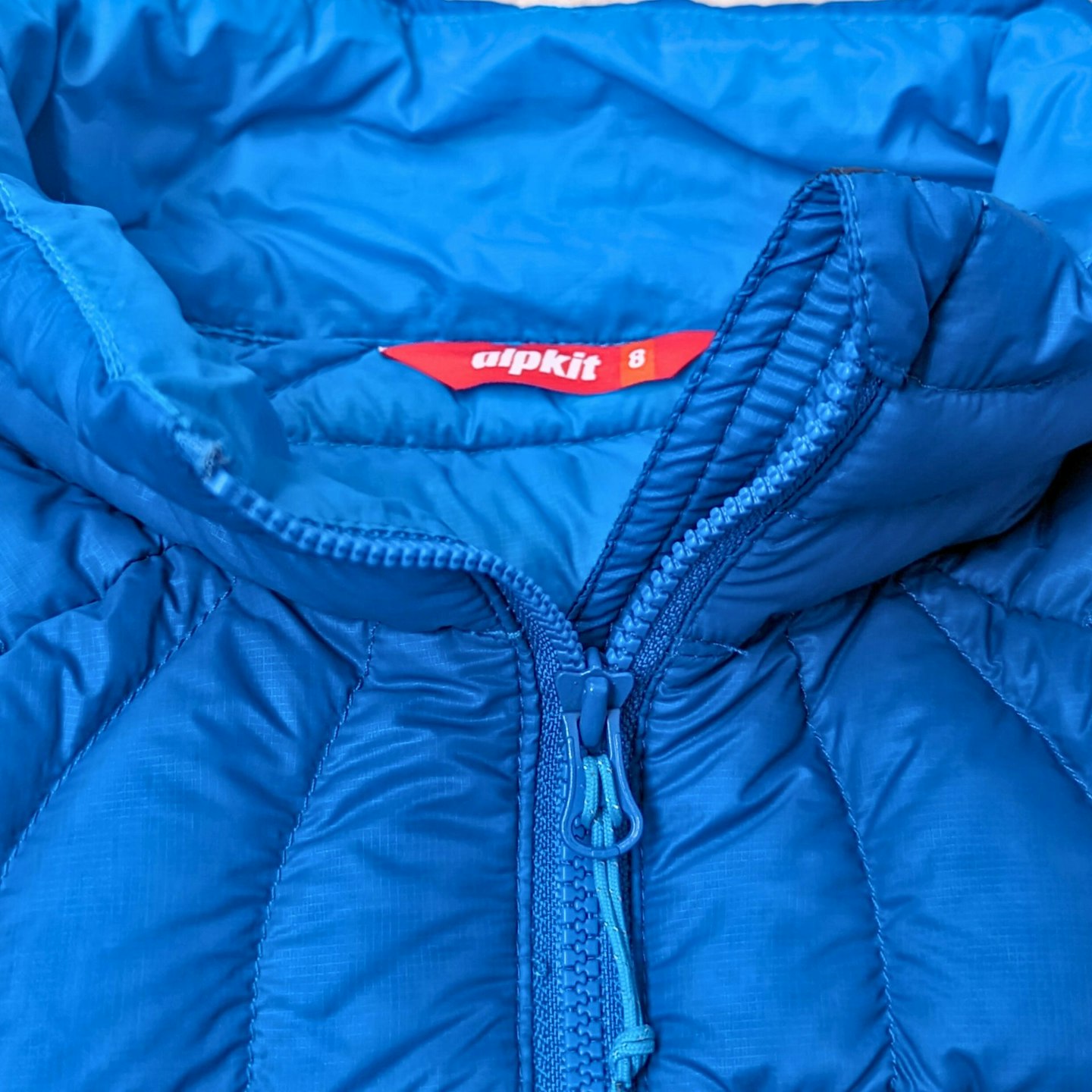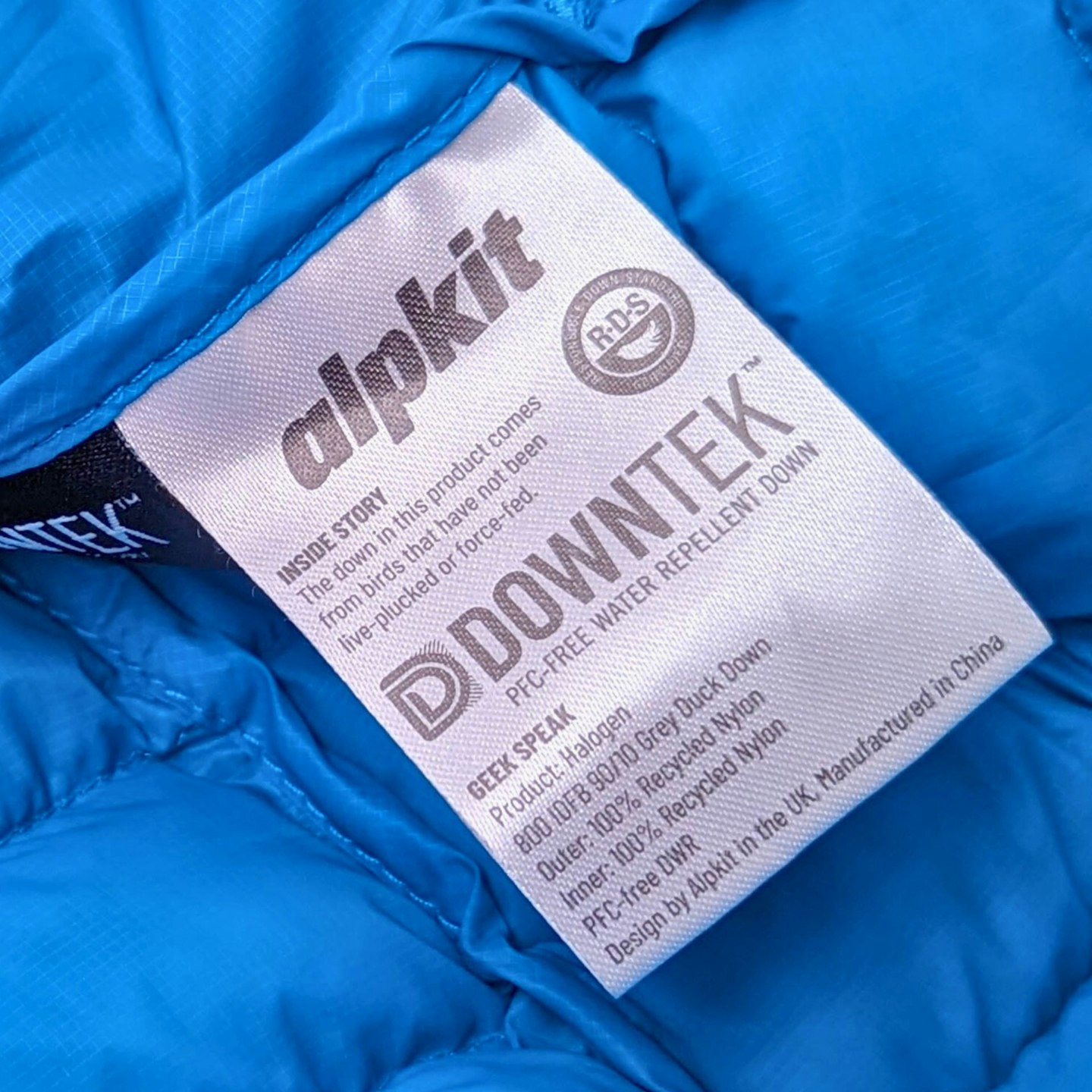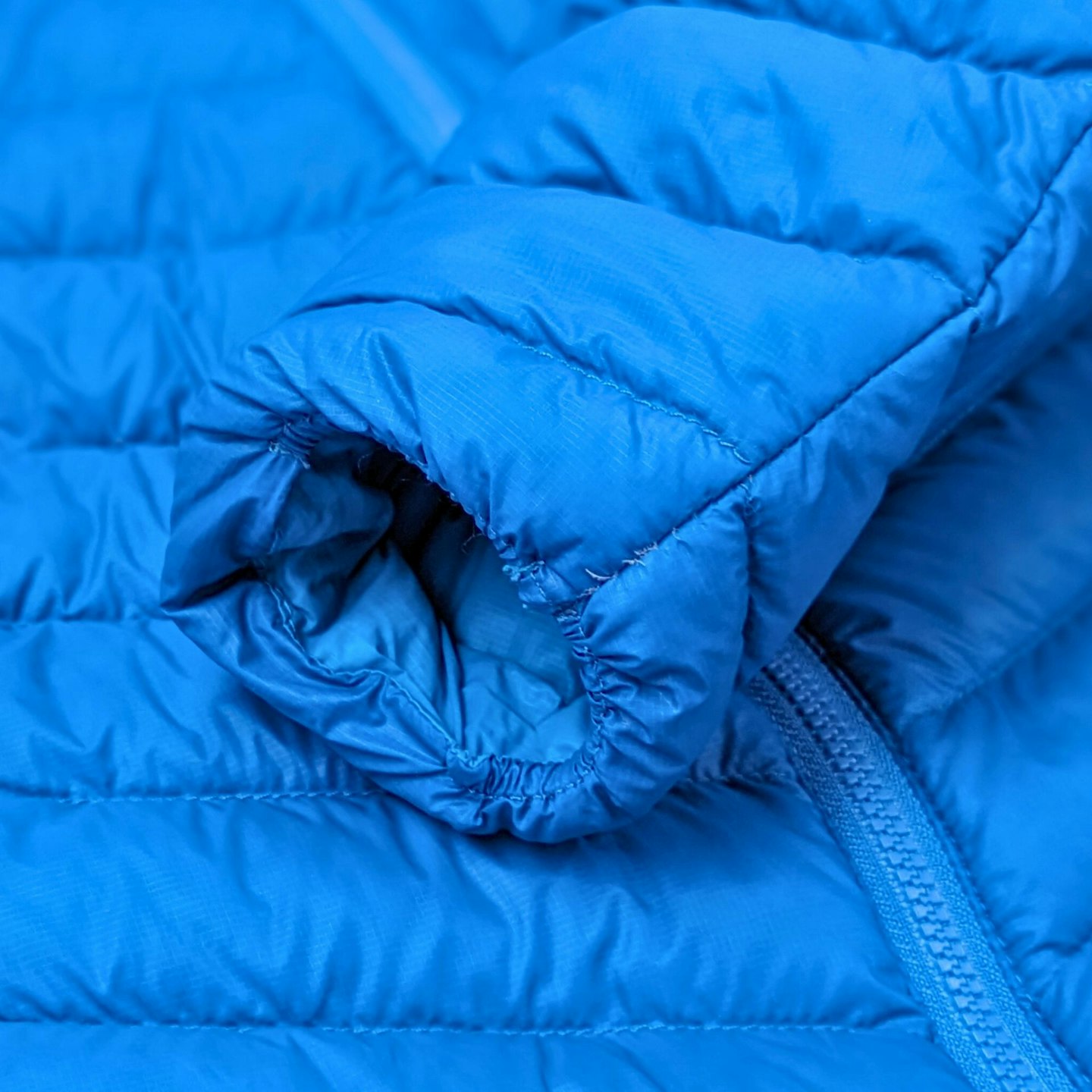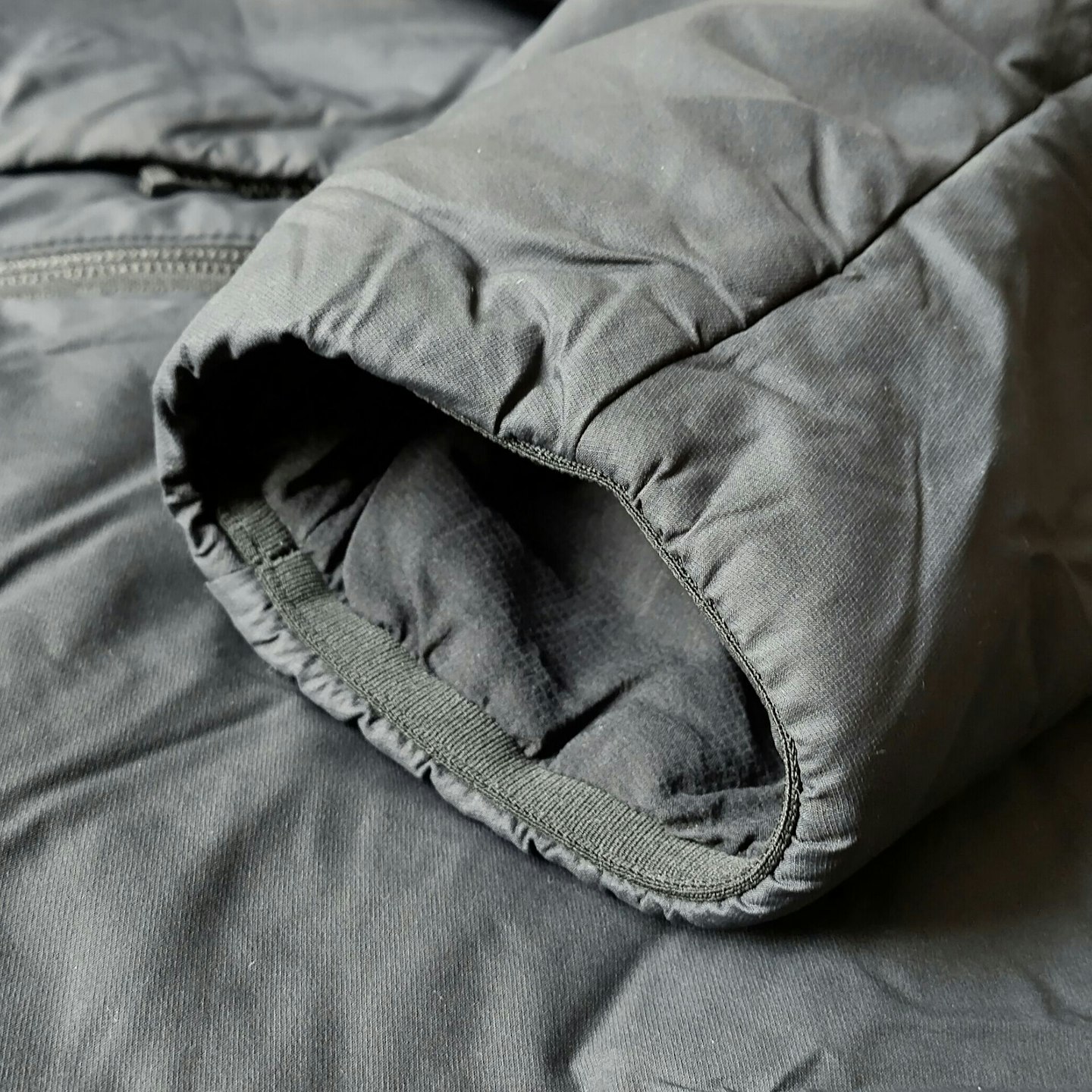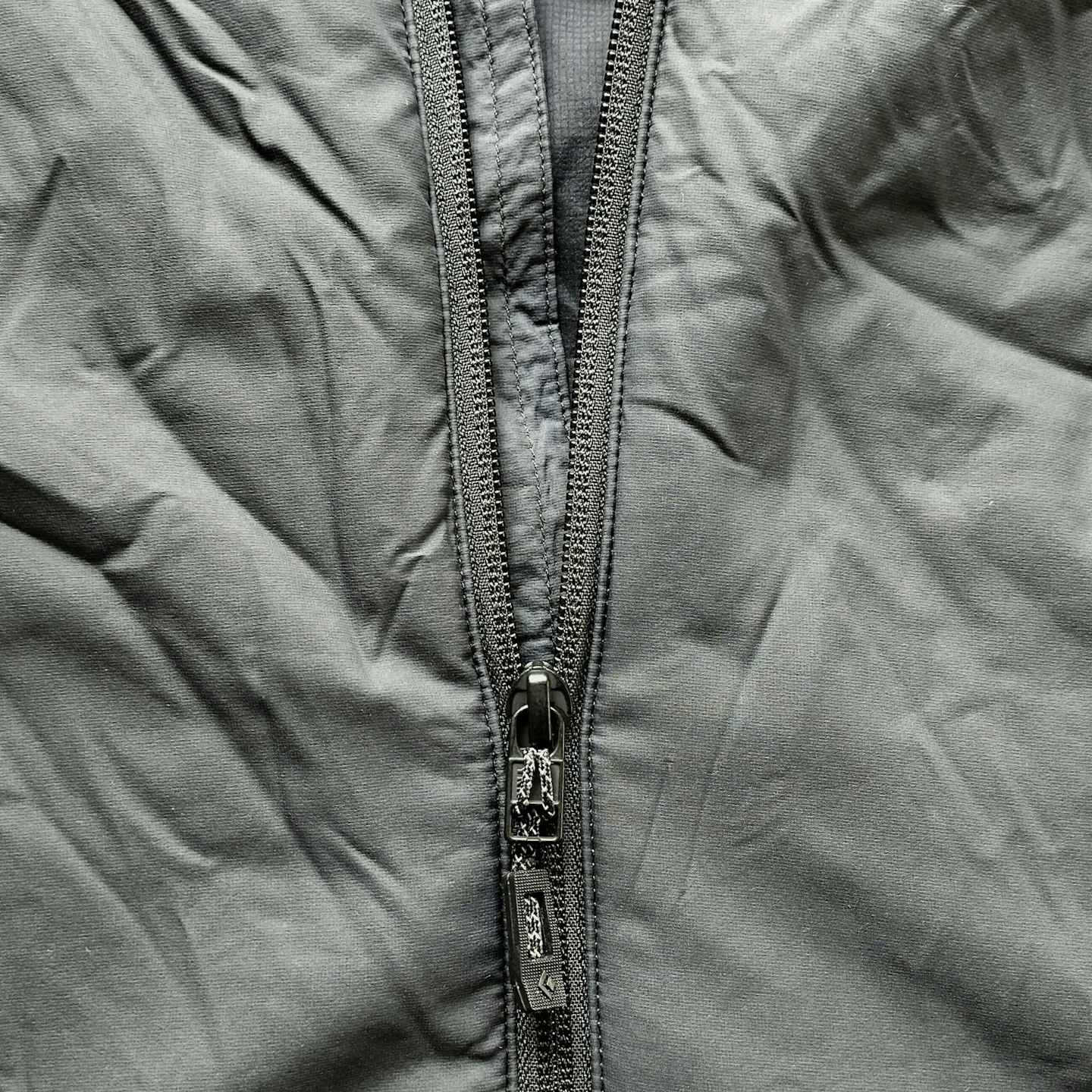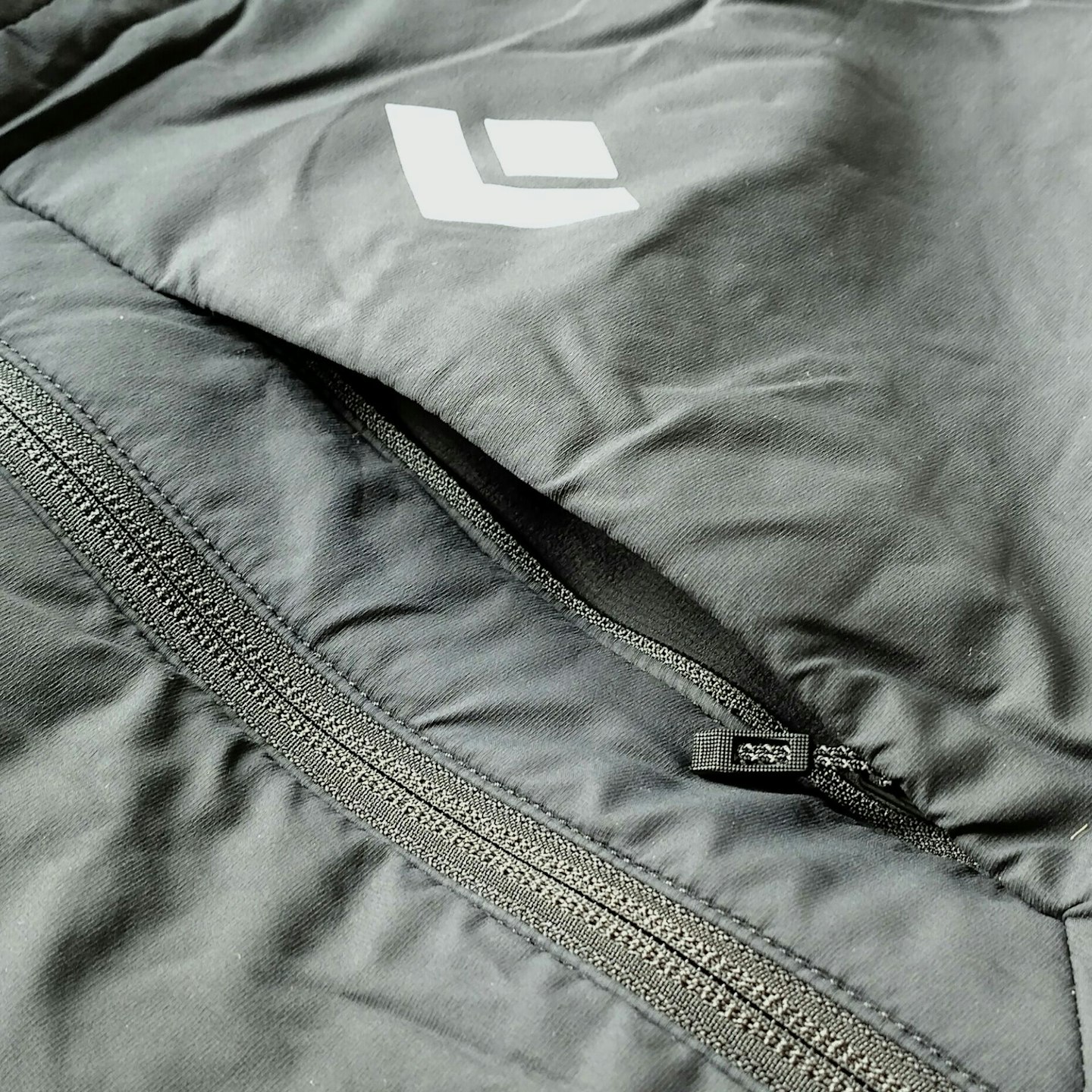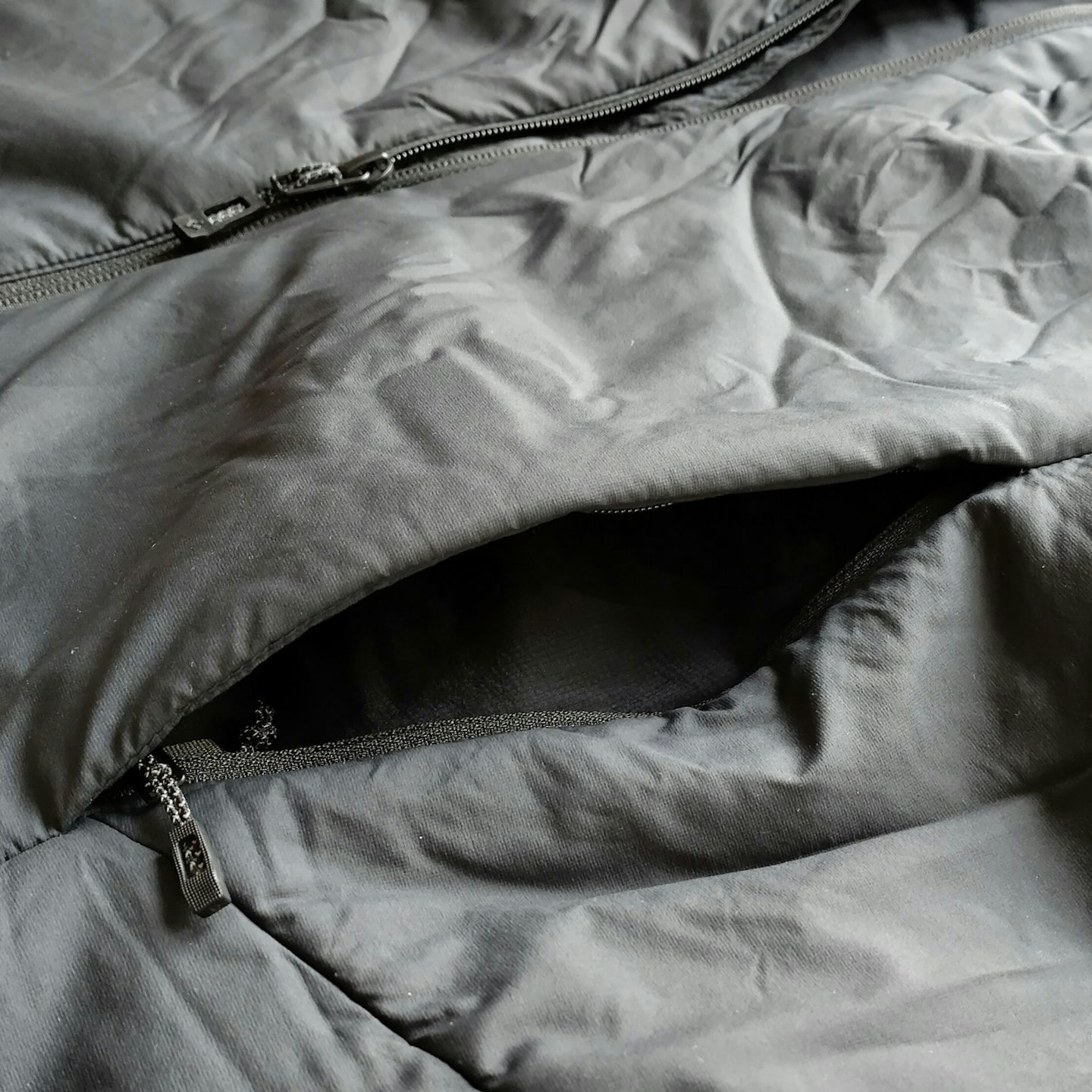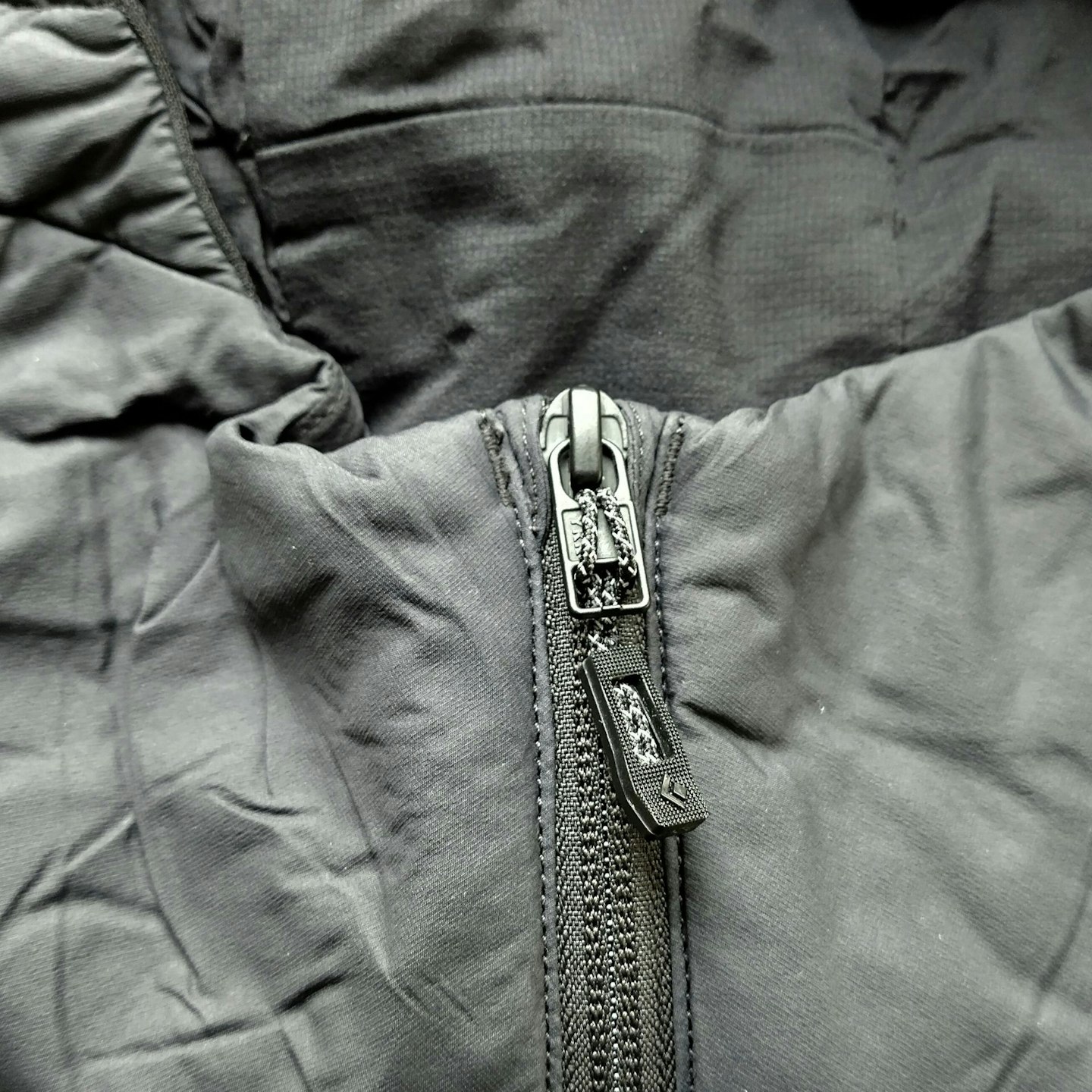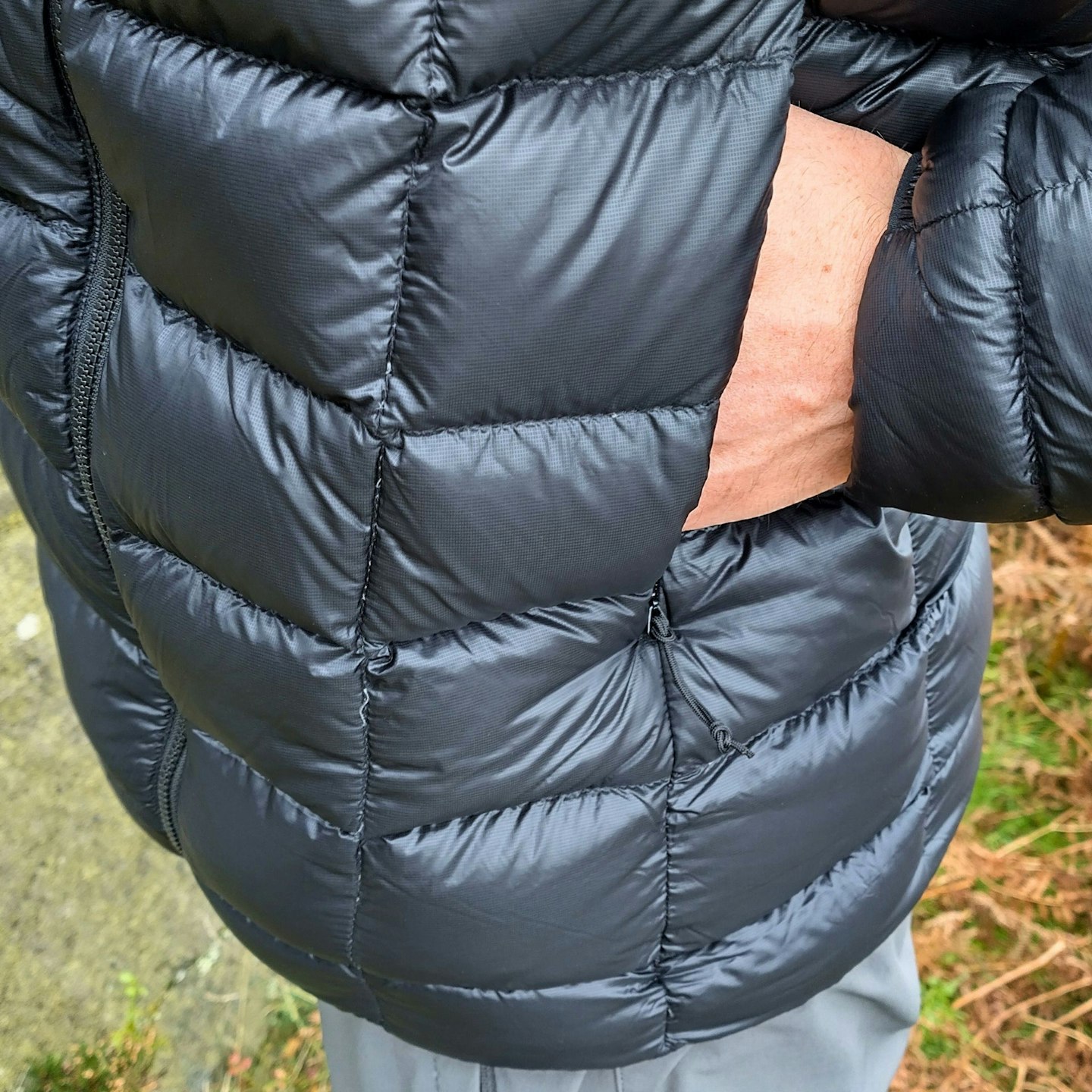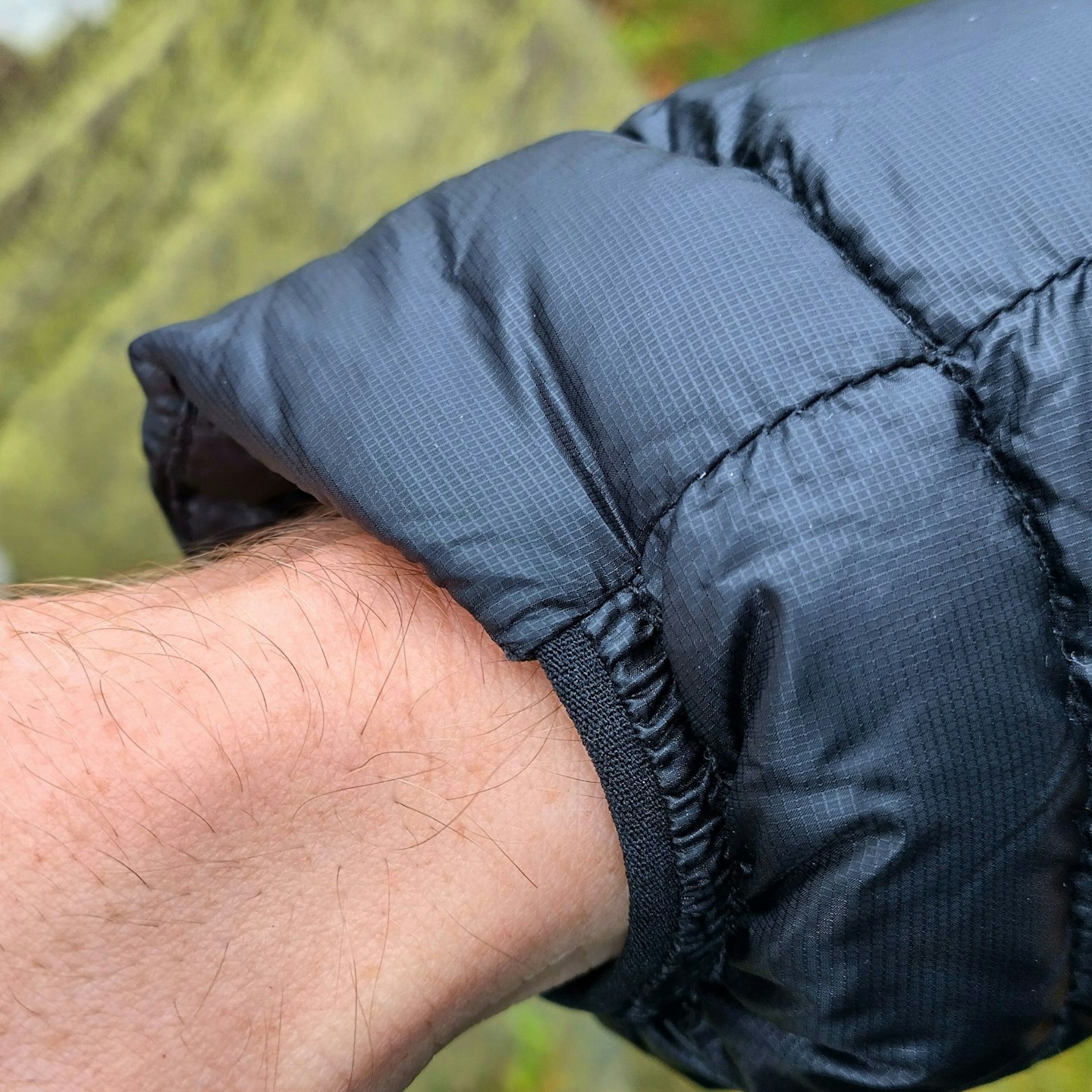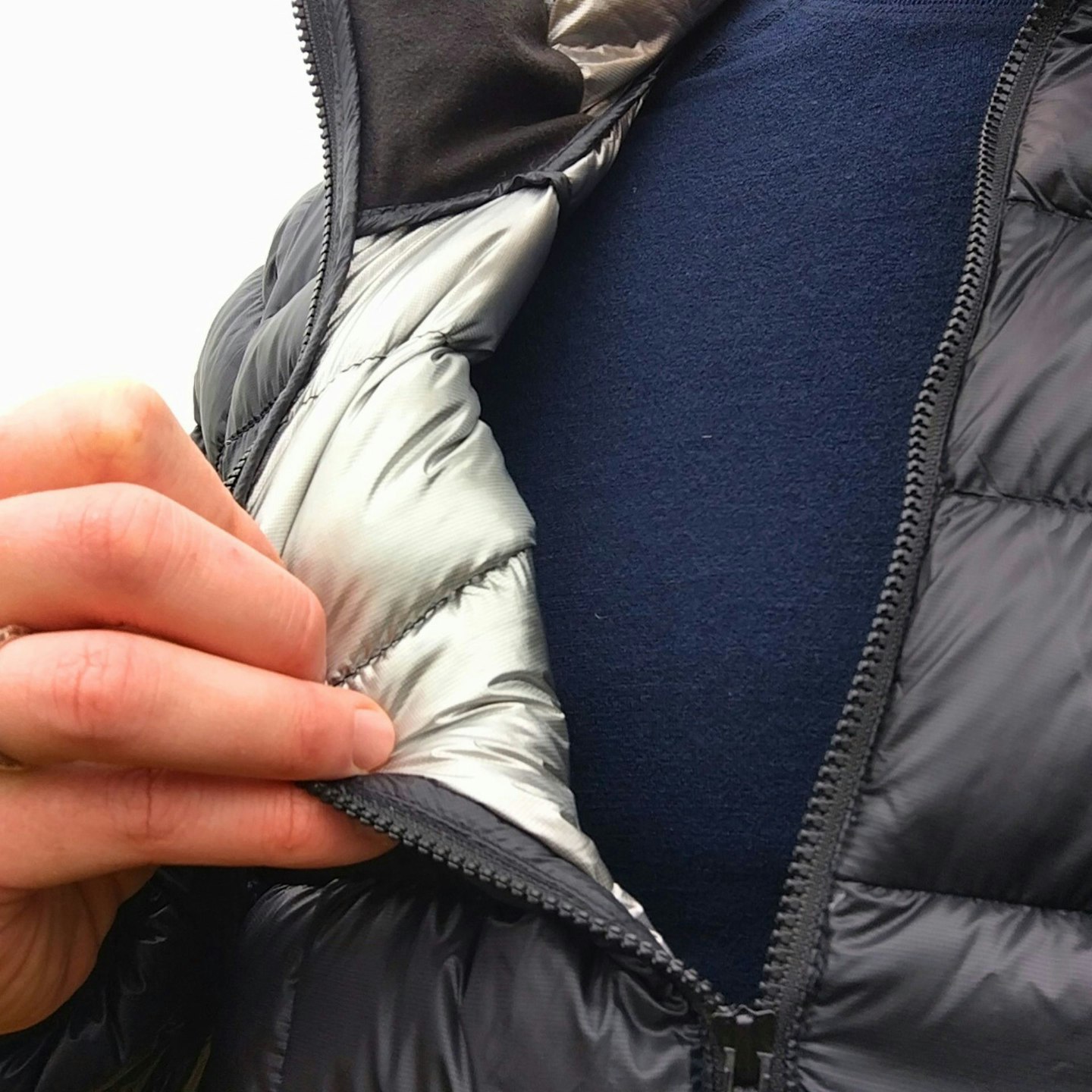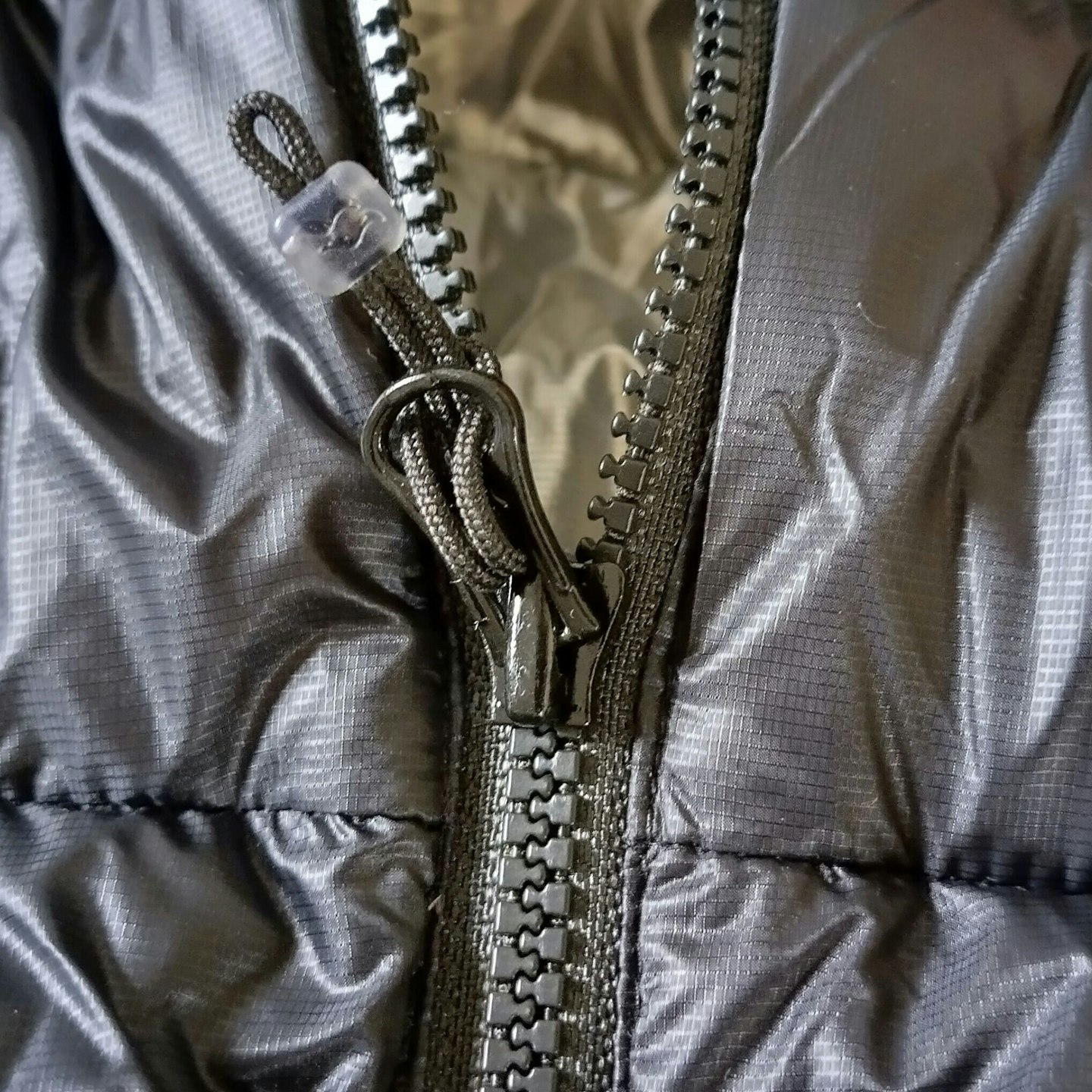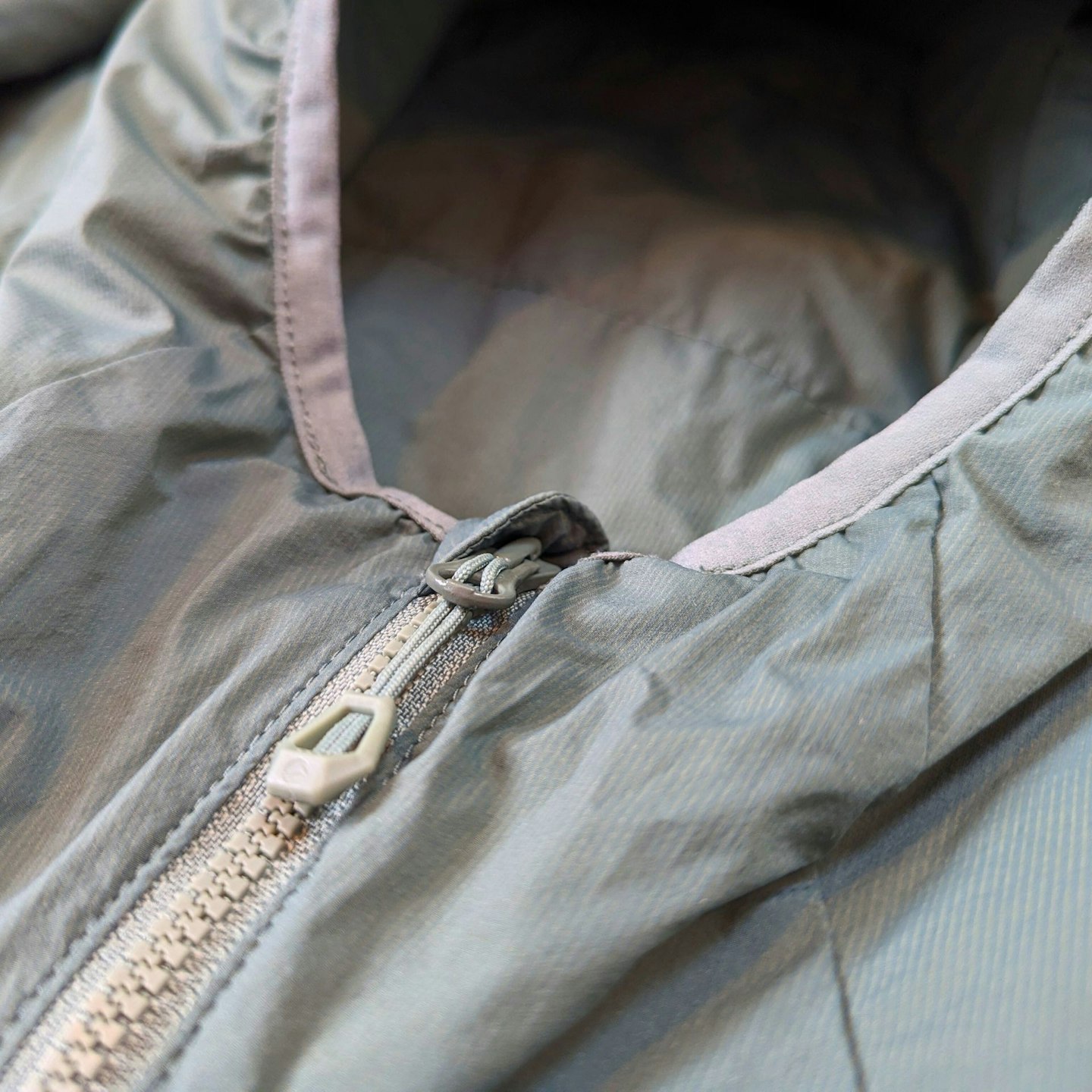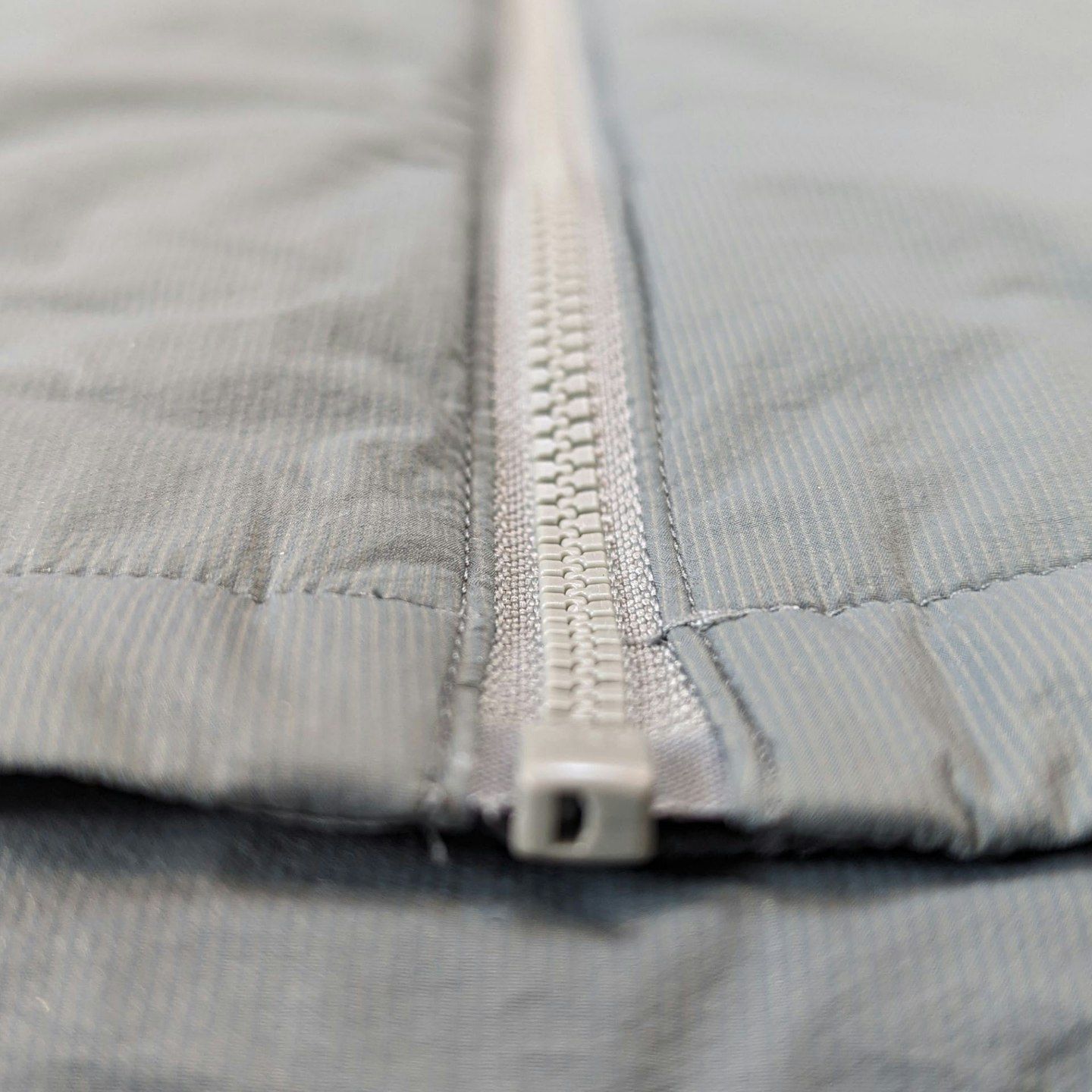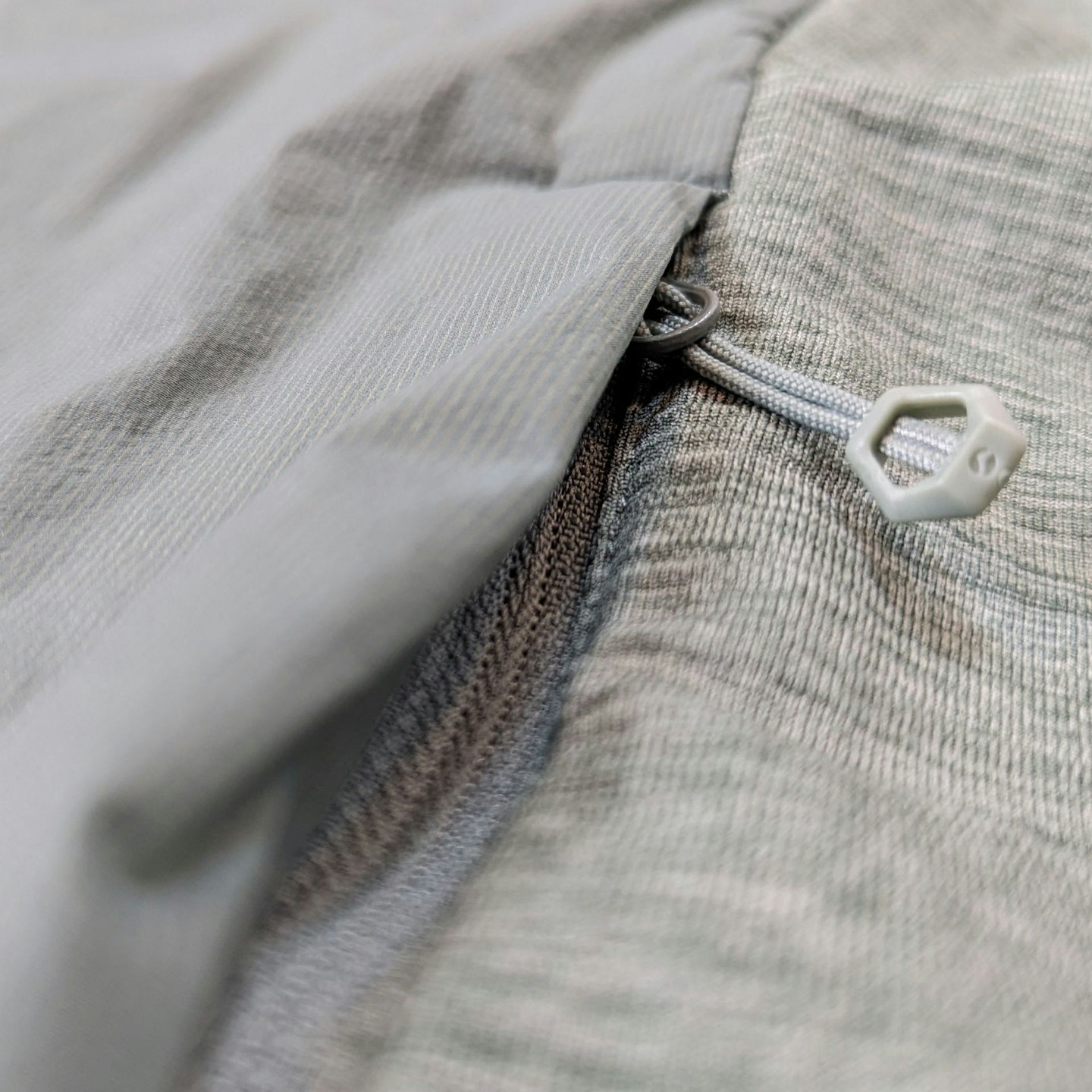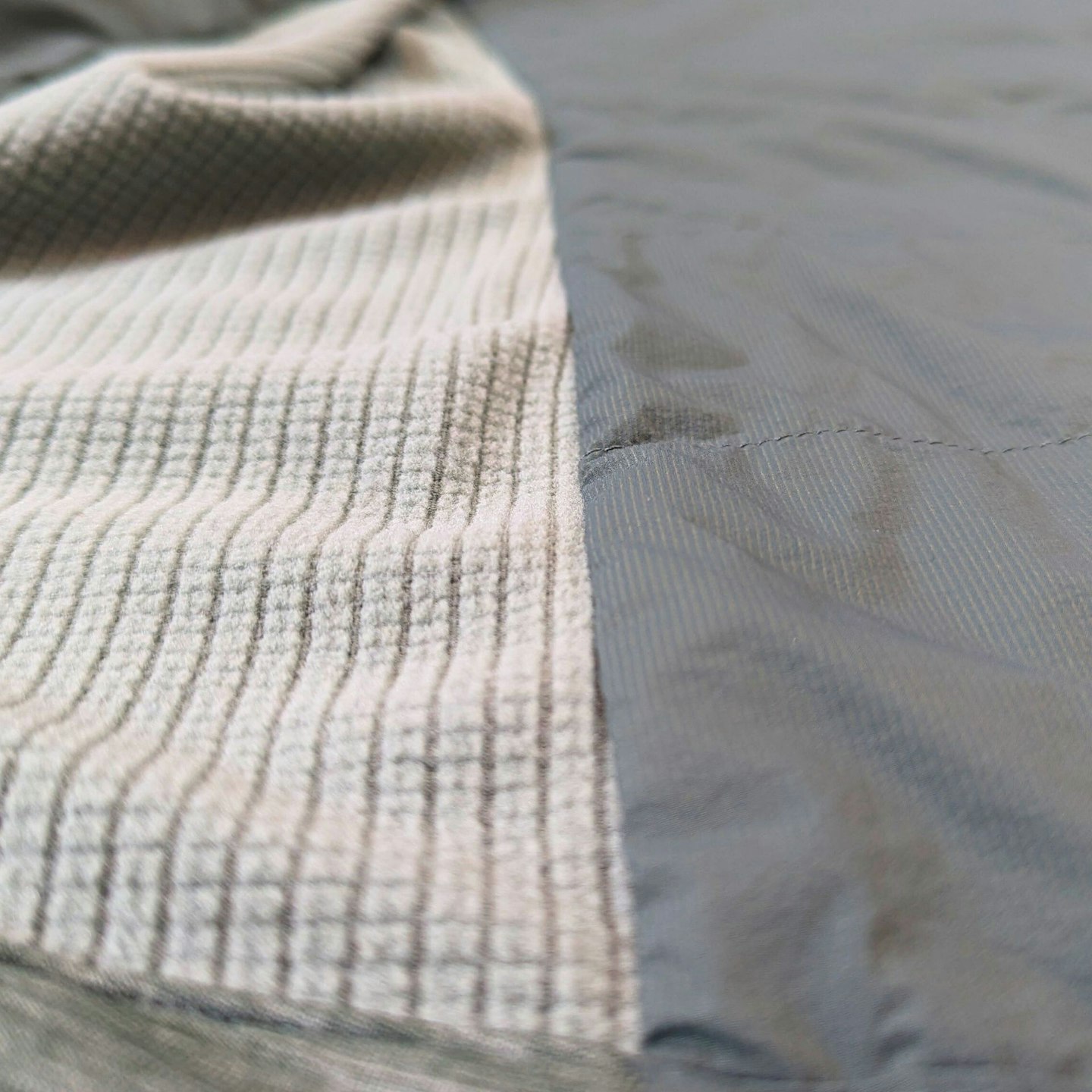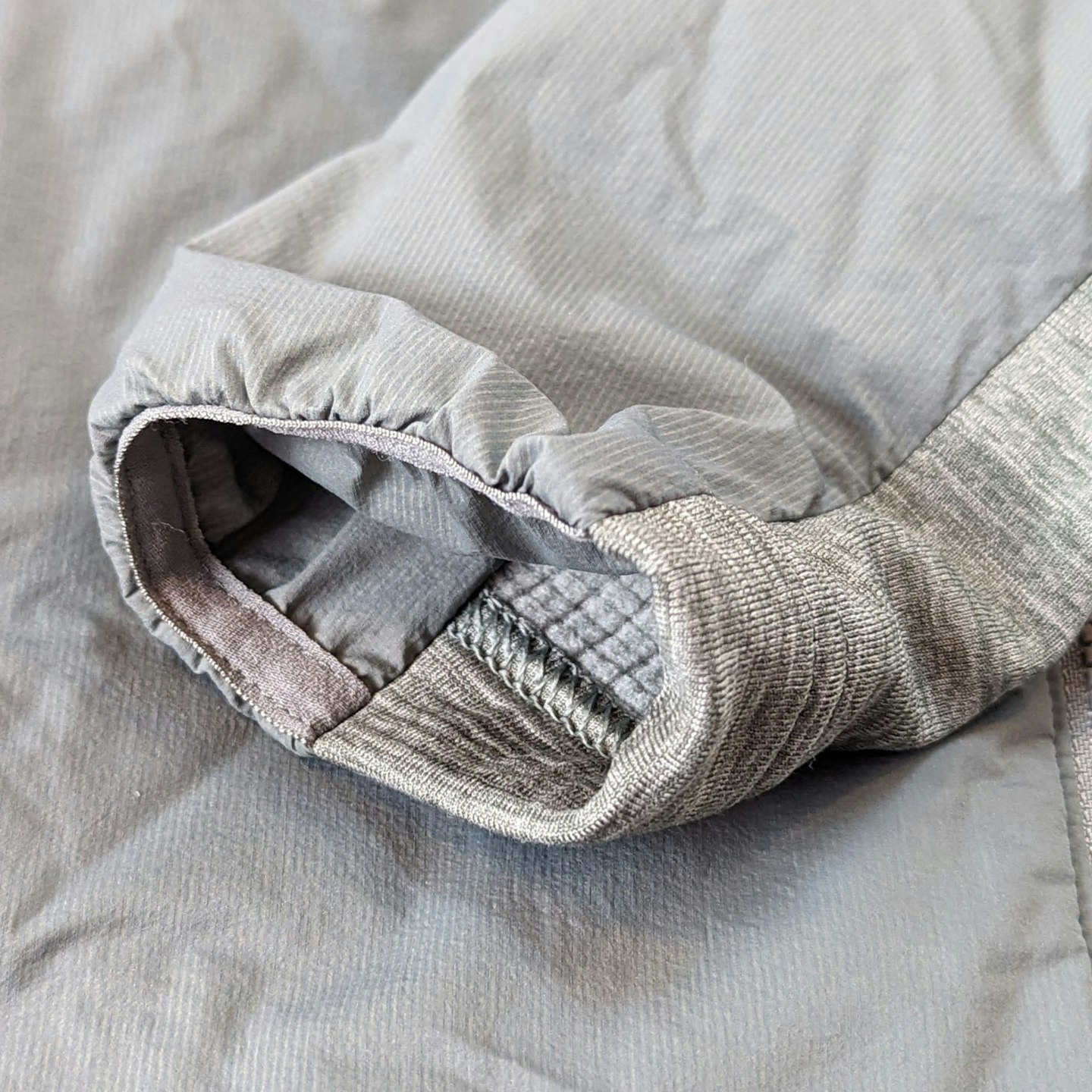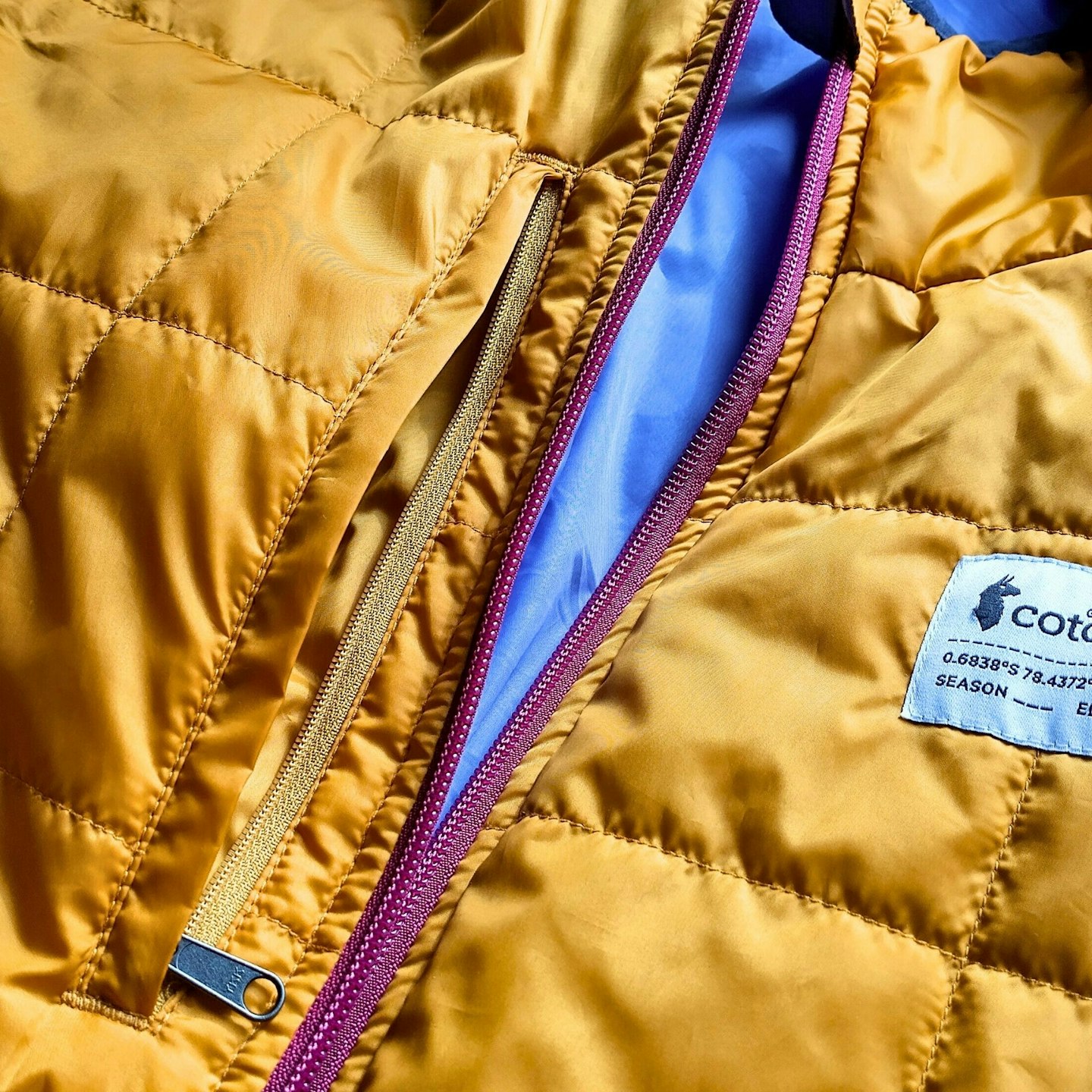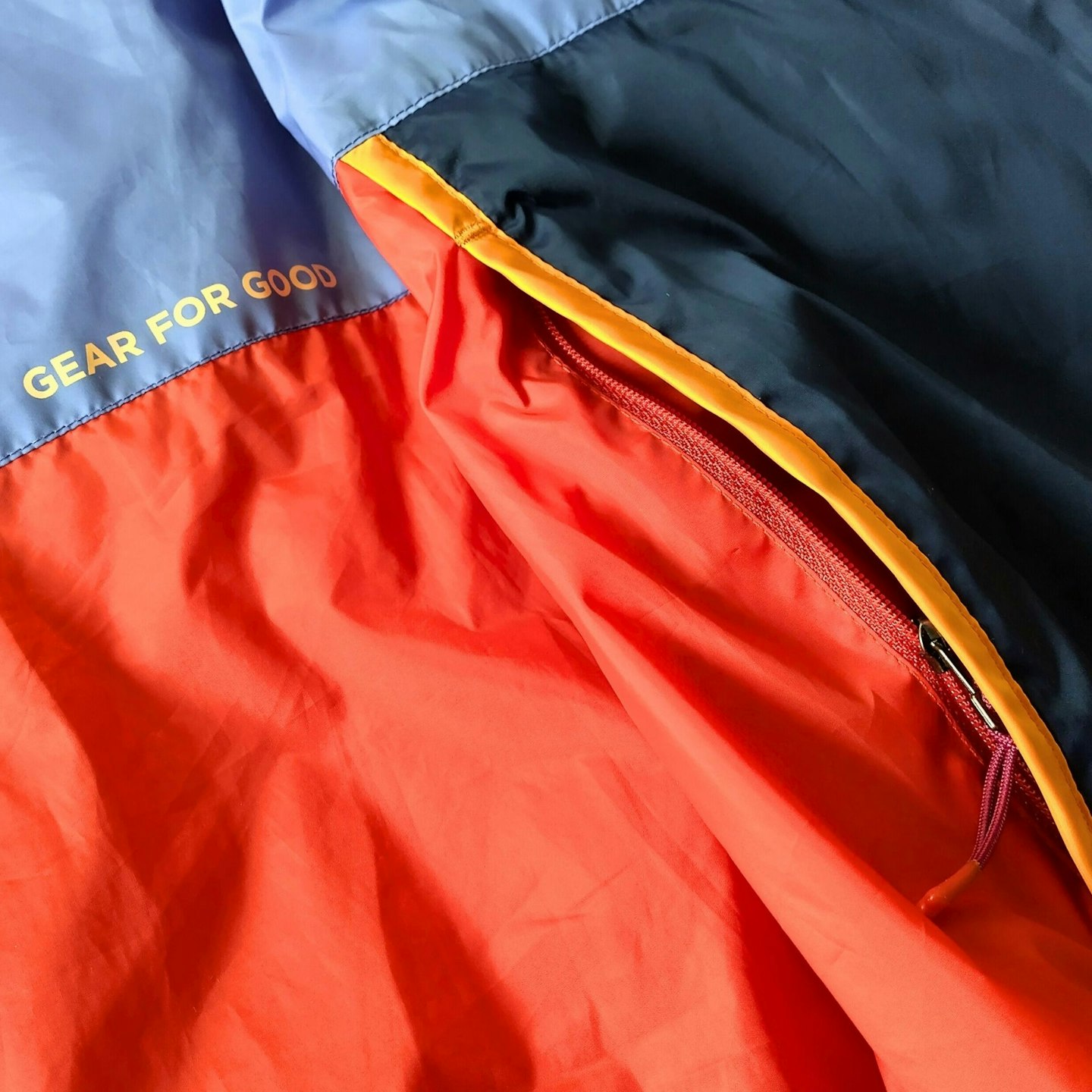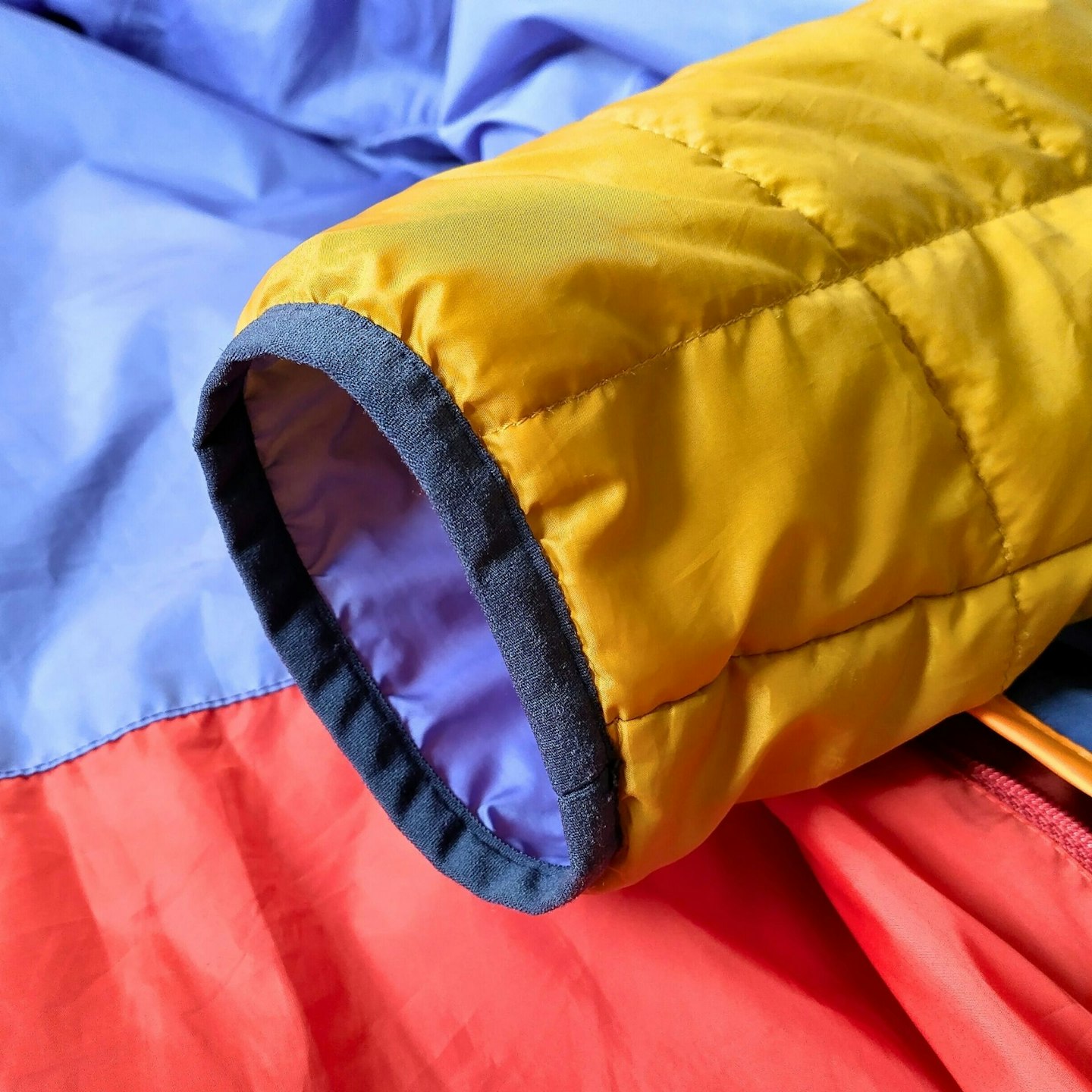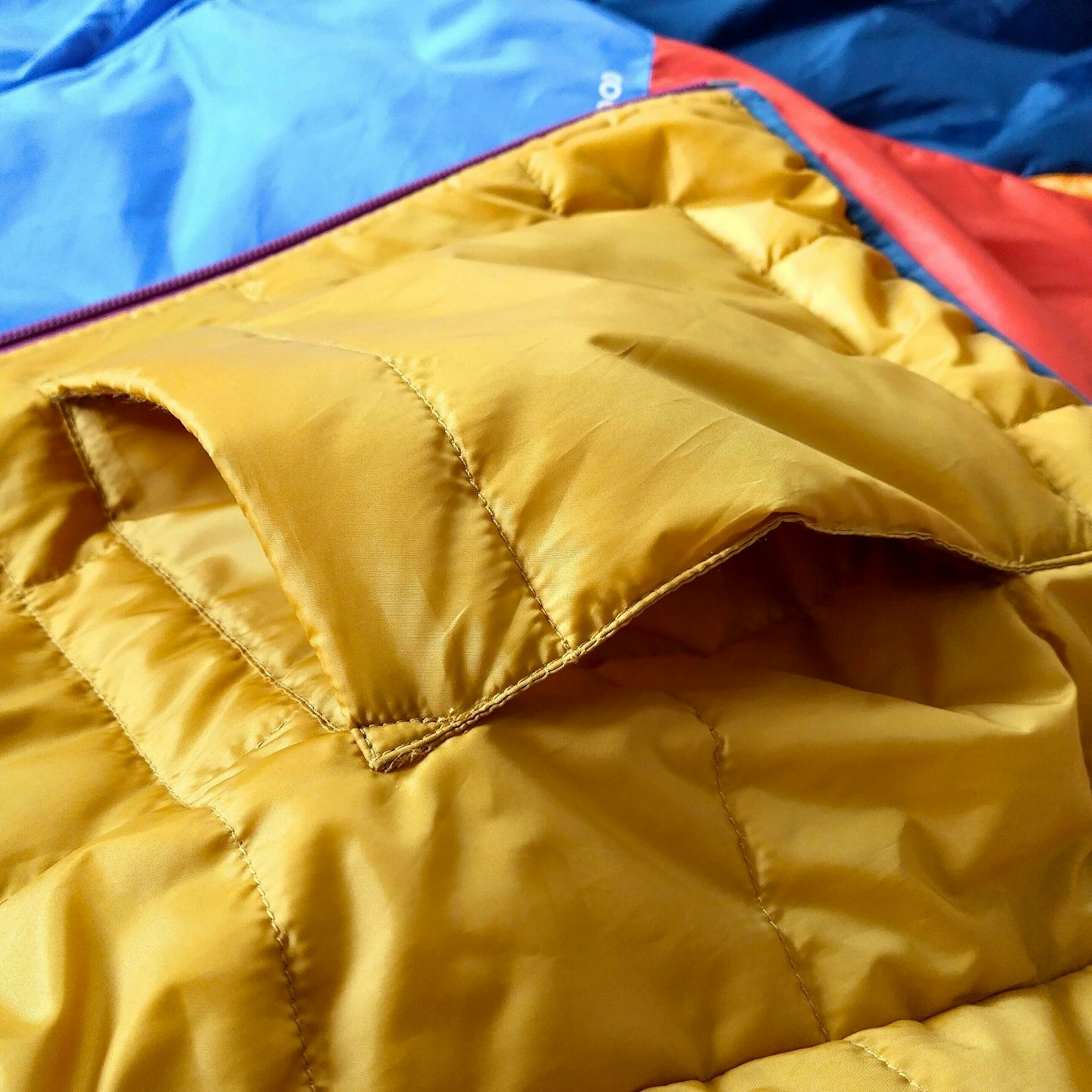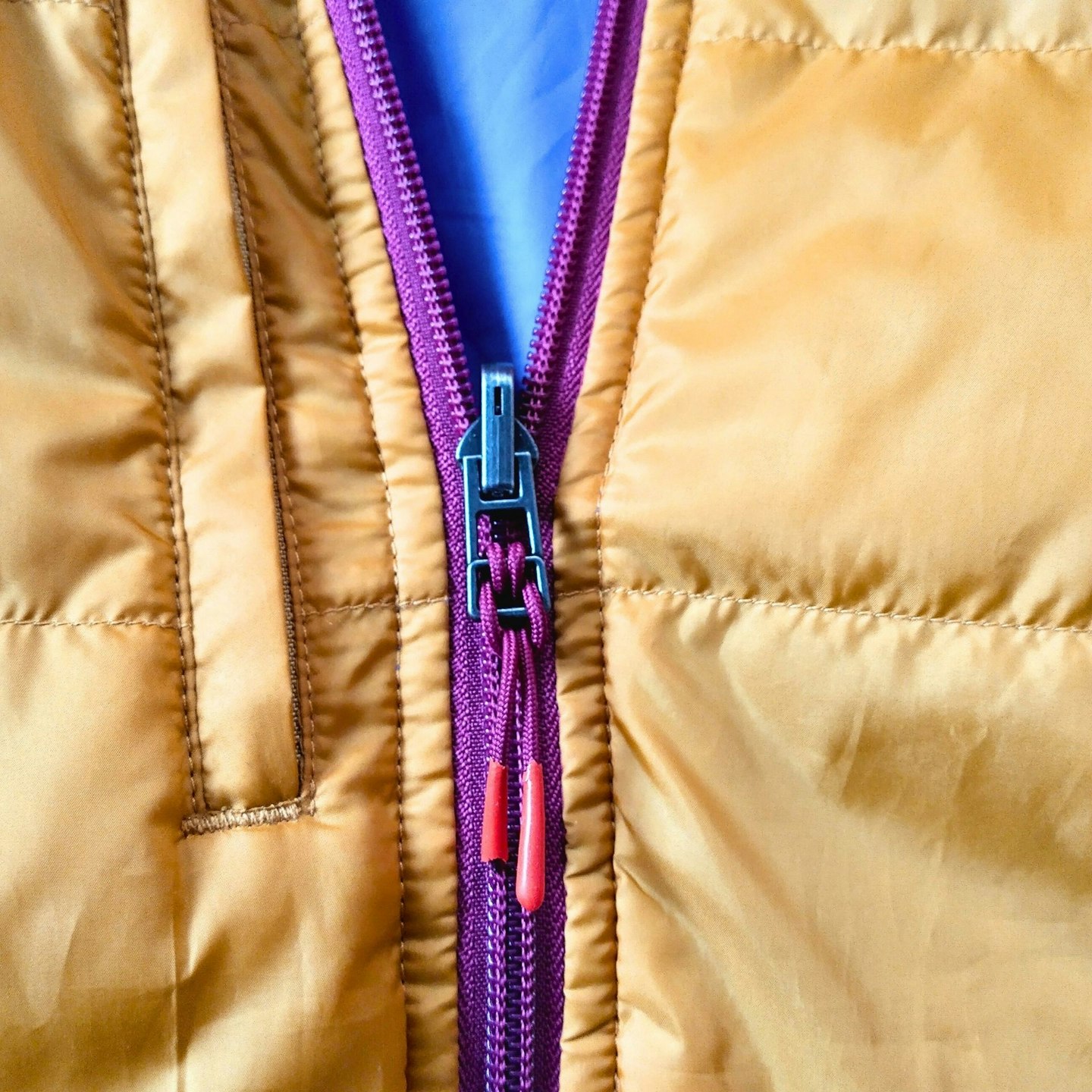The hiking jacket category is a very broad one. Within it is a variety ranging from waterproof jackets to fleeces. It's therefore easy to get bogged down when trying to choose one for your outdoor escapades. Lightweight insulated jackets are great winter mid layers and outer layers for chilly days throughout the year.
We've been testing a collection of lightweight insulated jackets to find the best. The ones we've recommended here vary quite a bit from each other, so there's something for everyone.
Lightweight insulated jackets are a category that has proliferated in the twenty first century. Advances in lightweight fabrics have made this possible. Down feathers still lead the insulation pack in terms of insulating efficiency, but class-leading synthetic insulation is very impressive these days, while outperforming down in damp conditions, and certainly beating it on price.
Best lightweight insulated jackets at a glance:
Best in Test: Artilect Divide Fusion Stretch - view on artilect.studio
Best Value: Kathmandu Heli R - view on alpinetrek.co.uk
Best warmth to weight ratio: Rab Mythic G - view on cotswoldoutdoor.com
Best for breathability: Montane Fireball Lite Hooded - view on montane.com
In this guide, we have included a range of down and synthetic insulated jackets that excelled during our tests, albeit for different reasons. In this way, we can suggest a variety of jackets to suit a wide variety of needs and budgets.
Best lightweight insulated jackets in detail:
It’s only when a jacket like this comes along that you realise the outdoor industry’s innovation has been reasonably static for a long time. ‘How different are insulated jackets really?’ so many of us think. In this case, very.
In pursuing performance and sustainability with equal vigour, Artilect has employed some cutting edge tech for the Divide Fusion Stretch jacket. One of these is the durable water repellent coating (DWR). It’s called EMPEL and it’s not only PFC-free, it’s permanent compared to ‘regular’ DWRs which need reproofing because EMPEL applied using molecular bonding compared to a wash-in process.
We also love the approach to making the down hydrophobic, which uses FUZE. Like EMPEL, FUZE is an eco-friendly yet high performance treatment. It bonds gold particles (yes, gold) to the down because it turbocharges moisture evaporation.
FUZE and EMPEL work brilliantly. We got caught in some heavy rain in this jacket and the fabric kept water at bay for about 15 minutes, which is pretty decent for a non-waterproof jacket.
The slightly athletic fit with stretchy wool panels is great for layering with and overall, the Artilect Divide Fusion Stretch is a superb winter mid layer and standalone outer layer.
Check out the women's version here
Read our full Artilect Divide Fusion Stretch Jacket review here
Pros
- Innovative approach to water-repellency
- Versatile
- Sustainable
- Highly functional yet stylish
Cons
- Not worth it for casual hikers
| Weight | 400g |
| Fabric | Bluesign-approved 20D Toray fabric w/ PFC-free GTT EMPEL DWR; 60gsm Lavalan European Wool |
| Insulation | RDS 700-fill down w/ PFC-free ExpeDRY hydrophobic treatment featuring FUZE |
| Men's sizes | XS - 2XL |
| Women's sizes | XS - XL |
Northern Hemisphere dwellers will likely never have heard of this brand. But far away in the antipodes of New Zealand and Australia, Kathmandu is the most popular outdoor clothing brand.
The Heli R is a no-nonsense lightweight down insulated jacket. It has the important stuff and very little flim flam.
The insulation is around 100g of 600-fill down, which is makes the Heli R super packable and lightweight. The outer material is recycled and bluesign-approved.
There are two zipped handwarmer pockets, one of which the Heli R can be stuffed into. We found the DWR helps keep light rain from penetrating the main fabric.
We like that there is a hooded version also available and that the regular (but not too relaxed) fit is easy to layer with. Predictably, it's far from the warmest insulated jacket around, but we found it's very versatile for hiking, but also travel thanks to its compressibility and light weight.
Check out the women's version here
Pros
- Affordable
- Still reasonably sustainable
- Good for layering
Cons
- You might want a more athletic fit
- Quite light on features
| Weight | 300g |
| Fabric | Bluesign-approved, recycled polyester w/ DWR |
| Insulation | RDS 600-fill down |
| Men's sizes | XS - 2XL |
| Women's sizes | 6 - 18 |
Those with a desire for a lightweight down jacket but neither the want nor need for the top end Rab Mythic G will find the Alpkit Halogen a highly appealing alternative. It's a lightweight 800FP down jacket without a hood that acts as a good insulating mid-layer for sub-zero hikes, or a great outer layer for milder days out. It’s made from 100% recycled 10D nylon, with a PFC-free DWR (durable water repellent) to help keep moisture at bay if rain does threaten.
Weighing just 255g, the Halogen is very versatile and compressible. Like the Kathmandu Heli Thermore, it’s quite a no-nonsense insulated jacket focused on performance at a good price point without compromising too much on sustainability. Along with the use of recycled material, the high-loft down is RDS-certified.
The Halogen jacket has three pockets: a small zip chest pocket that’s the right size for keys and a purse, as well as two front ‘hand warmer’ pockets to slide numb fingers into on a cold day.
Though these are handy (no pun intended), we found that zip closures would be useful additions so you can secure a phone inside, for example. The smaller chest pocket doubles up as a stuff pocket for packing away the jacket, with a reverse zip closure. However, in practice, we found the pocket isn’t big enough to comfortably fit the stuffed jacket without almost bursting at the seams.
We liked the nicely shaped, tailored fit of the Halogen, with neat details in the half-elasticated cuffs and panelled down formation all coming together to provide a nice and snug fit. Sizing is true to size via Alpkit’s guide. Our female UK8 tester best fitting a UK10 as per the guide’s measurements. For this reason, it’s worth sizing up at least one level from your normal clothing size in this slim-fit jacket. As this was a tighter fit on our tester, we did find some of the tiny down feathers liked to escape via the seams.
Check out the men's version here
Pros
- Athletic, tailored fit
- Excellent warmth-to-weight ratio
- Lightweight
- Stylish
Cons
- Suffers more down leakage than others
- One zip pocket
- Stuff pocket is a bit small
| Weight | 255g |
| Fabric | Recycled 10D nylon w/ PFC-free DWR |
| Insulation | RDS 800-fill down w/ PFC-free DownTek hydrophobic treatment |
| Men's sizes | XS - 2XL |
| Women's sizes | 6 - 20 |
The Black Diamond First Light Stretch Hoody employs cutting-edge materials and thoughtful design to cater to demanding, high-intensity activities.
The telltale indicators of its suitability for active use are evident throughout. The chosen materials prioritise breathability, including the body-mapped PrimaLoft Gold Active synthetic insulation. However, it's essential to note this jacket isn't intended for idle moments but excels at keeping you warm while you're active in frigid conditions.
Unsurprisingly, the adjustable hood is helmet compatible, and in a bid to compete with the compressibility of down jackets, the First Light Stretch Hoody can stuff into its internal mesh pocket.
The outer fabric’s wind and water resistance are very impressive for a non-waterproof jacket. It’s a lightweight 20D construction, and is more durable than expected too, but certainly not bombproof.
In summary, the First Light Stretch Hoody is a highly breathable synthetic insulated jacket that offers exceptional comfort and weather resistance. It represents the pinnacle of active insulation.
Check out the women's version here
Pros
- Impressive weather resistance
- PFC-free DWR
- Comfortable 'athletic' fit
- Excellent breathability
Cons
- Maybe a bit specialist for some
| Weight | 405g |
| Fabric | Bluesign-approved 20D ripstop nylon w/ PFC-free DWR |
| Insulation | PrimaLoft Gold Active |
| Men's sizes | S - XL |
| Women's sizes | XS - XL |
Seeing jackets and sleeping bags with 800 fill-power ratings is impressive. It denotes very high quality down. Occasionally you see 900-fill down and that’s amazing. In pursuit of a class-leading warmth-to-weight ratio, Rab’s Mythic G goes further: it uses 1000-fill power down.
That may excite you, or it may just be a number. Whatever your reaction, we found the results are indisputable. This super high quality down, boosted significantly by a heat-reflective lining, makes the Mythic G 13% lighter than Rab’s already hugely impressive Zero G, and noticeably warmer than anything else we’ve worn of an equivalent weight (sub-300g).
The Mythic G is unapologetically niche – focused on alpine use, be it mountaineering, climbing, or skiing. The fit is slim, the hem is short, and the two handwarmer pockets are positioned quite high, for use with a harness.
While the quality of the materials is very high quality (the eco credentials are up there too), they do feel quite fine – particularly the 7D nylon fabric. We’re not saying this jacket will fall to pieces. We’re saying you need to be careful with it. Do that and it has the potential to last decades, especially with Rab’s repair service on hand.
Check out the women's version here
Pros
- Remarkable warmth-to-weight ratio
- Quite sustainable
- Ideal for mountain use
- Allows for good freedom of movement
- Heat-reflective lining
Cons
- Too niche for most
- Outer fabric might prove too delicate for those harsh on their gear
- Suffers a bit more down leakage than others
| Weight | 277g |
| Fabric | 7D Atmos nylon w/ PFC-free DWR |
| Insulation | RDS 1000-fill goose down |
| Men's sizes | S - 2XL |
| Women's sizes | 8 - 16 |
Designed primarily for hiking, climbing and fastpacking, the Montane Fireball Lite Hooded Insulated Jacket is a thin, lightweight insulating jacket that we found is squarely for more high-octane activities. It uses 100% recycled polyester insulation.
The Fireball Lite Hooded has a panelled design, with the body being made from Montane’s Featherlite Air nylon which is a stretchy air-permeable fabric. It’s coated with a DWR coating, and inside is a recycled 40g/m2 polyester insulation. This all combined to provide us with excellent breathability and freedom of movement. Meanwhile the fleece side and underarm panels are made from a stretchy Thermo Grid material and felt very comfy and soft.
The Fireball Lite Hooded offers two useful front zip pockets, which we found to be large enough for a phone and valuables. Its slim hood is designed to fit under a bike helmet if desired. We found the adjustable drawstring hem with semi-elasticated cuffs cinch the jacket into the body, though this jacket isn’t windproof.
The lack of windproofing anchors the Fireball Lite Hooded as an active insulating layer that prioritises breathability. We found it’s not warm enough to capture enough body heat when standing still or moving at a leisurely pace.
As for sizing, a women’s UK8 fits pretty true to size if you’re after a regular fit, with enough room underneath for a layer or two and a bit of length in the body.
Check out the men's version here
Pros
- Lightweight and breathable layer
- Effective active insulation
- Performs in damp conditions
Cons
- Not super warm
- Arguably overpriced
| Weight | 360g |
| Fabric | Featherlite Air nylon w/ DWR; Stretch Thermo Grid fleece |
| Insulation | Recycled Dynamic Eco |
| Men's sizes | S - 2XL |
| Women's sizes | 8 - 16 |
For those after a lightweight insulating layer for casual hillwalks and hikes, it’s always nice to add some extra style into the mix. We found that Utah-based brand Cotopaxi's Teca Cálido hits the spot.
There are several reasons our testing concluded that this is the ideal peak-to-pub jacket. Its lightweight synthetic insulation performs very well in cooler conditions at a leisurely pace but does get a bit hot when working harder.
There are generous, usable pockets including two-way handwarmer pockets, and the jacket is reversible, meaning you get not just one stylish jacket, but two.
It’s quite a sustainable jacket too. The outer polyester fabric is repurposed from left over fabric of other companies’ production runs. Its insulation is recycled too. It’s not classed as PFC/PFAS-free, primarily due to the use of repurposed material, which comes from sources Cotopaxi isn’t in control of. Cotopaxi is also a certified B Corp.
We liked the value too, being priced at least £100 or so less than more technical lightweight insulated jackets.
Check out the men's version here
Pros
- Reversible
- Comfortable
- Sustainable
- Versatile
Cons
- Not suitable for demanding or technical outings
| Weight | 360g |
| Fabric | Repurposed polyester taffeta w/ DWR |
| Insulation | Recycled 60gsm polyester |
| Men's sizes | S - 2XL |
| Women's sizes | XS - XL |
At just 220g, this super-minimalist mid layer is the lightest on test by some margin. It has a very thin and streamlined cut, meaning it works well in a layering system, and for high-intensity activity it performs excellently.
We found breathability is first-rate, the jacket moves nicely with your body (thanks to stretchy side panels), and you get a decent warmth boost too (though it’s far from a super-warm option).
The construction pairs a Pertex Quantum Air shell with Polartec Alpha insulation (56% recycled). Alpha has an open woven structure, allowing airflow through the fabric to provide a better balance between wind resistance and breathability. It also has a DWR finish, so you’re protected in a light shower.
The design is ‘zoned’, with Alpha concentrated around the chest, neck, back and shoulders. We did notice that in places where there is no insulation (i.e. across the forearms) the Pertex Quantum shell material feels a tad clammy and lacks the next-to-skin comfort of fleece.
Check out the women's version here
Pros
- Superb breathability
- Best for high intensity activities
- Windproof and water repellent
- Jack Wolfskin a Fair Wear Foundation member with 'Leader' status
Cons
- A fleece is more comfortable
- Predictably not the warmest
| Weight | 220g |
| Fabric | Pertex Quantum Air shell w/ PFC-free DWR |
| Insulation | 56% recycled Polartec Alpha |
| Men's sizes | S - 2XL |
| Women's sizes | XS - XL |
The ultimate put on-keep on insulating layer is the vest (or gilet if you insist on using the term). Patagonia’s Nano-Air Light Vest (no prizes for guessing that it’s light and breathable) is such a great option for hiking hard in cooler conditions.
The Nano Air Light Vest only has a small amount of insulation, even compared to the lightweight options here. But that’s an advantage if you charging up a mountain. Having that extra layer around your core keeps your temperature regulating without overheating or adding much bulk (Nano-Air Vest weighs around 200g depending on size).
Given it’s intended to be used for high-exertion activities and kept on throughout the hike, Nano Air Light Vest has a slim fit. The fabric has some stretch too, and of course mobility is much better with a vest than a jacket.
As is often the case with Patagonia, we really like the sustainability efforts being made. The Nano Air Light Vest uses recycled polyester outer and insulation, while also being PFC/PFAS-free, and produced in a Fair Trade Certified factory.
Check out the men's version here
Pros
- Very breathable
- All-day comfort
- Sustainable
- Ideal for high-octane outings
Cons
- Not that warm when you're idle in cold conditions
| Weight | Not stated |
| Fabric | Recycled 30D polyester w/ PFC-free DWR |
| Insulation | 93% recycled FullRange polyester |
| Men's sizes | XS - 2XL |
| Women's sizes | XS - 2XL |
How we test insulated jackets
The jackets featured here have undergone rigorous testing primarily by Chris Williams, a staff writer at LFTO, who has been a part of our gear testing since 2021. Hailing from New Zealand, Chris brings a wealth of journalistic expertise and a lifetime of hiking experience to his gear assessments. Chris has also been assisted by two of our other experienced gear testers, Kate Milsom and Milo Wilson.
Together, they have tested and curated this list of insulated jackets. These jackets have been subjected to a wide range of conditions and temperatures, spanning from brisk chills to freezing cold, in both dry and damp weather.
We assess the insulation's performance in diverse conditions, as well as its ability to withstand moisture - both precipitation or perspiration. Furthermore, we scrutinise the jackets for their fit, comfort, and suitability for demanding environments. Their array of features is closely examined too, in order to determine their real-world practiality.
Sustainability is a principal concern for us, which is why we established our Tread Lightly award for products that do well here. Sustainability goes beyond using recycled materials; it includes the brand's elimination of harmful substances like PFC/PFAs, adherence to ethical labour standards, proactively reducing of emissions, and considerations of repairability, for example.
Read more about how we test.
What to look for in a lightweight insulated jacket
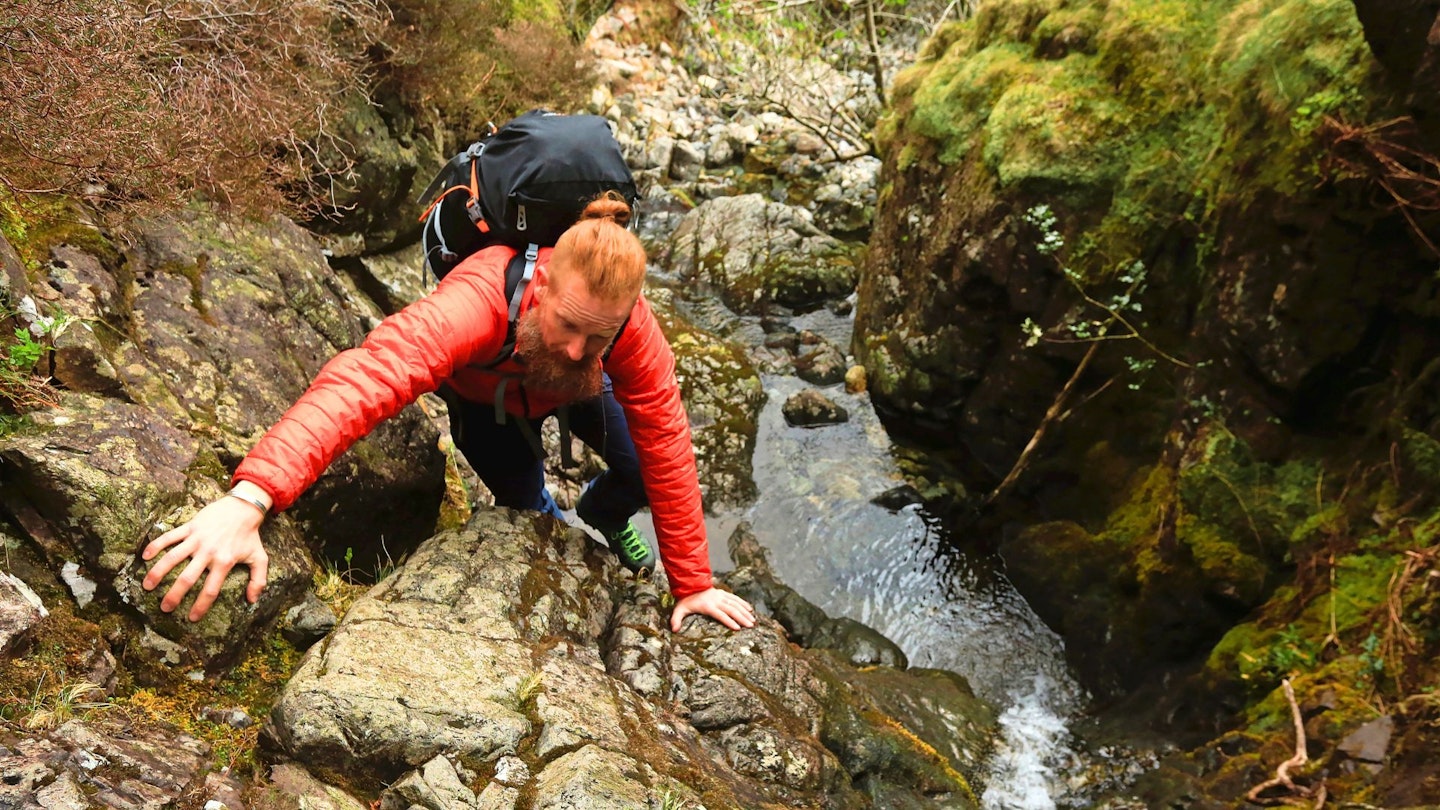
What is warmth-to-weight ratio?
Ideally with insulated jackets, you want the maximum possible warmth from as little insulation as possible. This keeps weight down, mobility and breathability up. A high warmth-to-weight ratio is achieved through high quality insulation. With down, a higher fill power means a higher warmth-to-weight ratio. Synthetic is a bit trickier but technologies like PrimaLoft ThermoPlume work to mimic down.
What is fill power?
With down insulated product you’ll see fill power ratings (700-fill, for example). The higher the value, the more loft the down has – i.e., the ‘fluffier’ it is and the better it is at insulating. High fill power is great for lightweight insulated jackets because it requires less down than lower fill power down to provide greater warmth.
Does an insulated jacket need water repellency?
Many of us like the security of water repellent jackets. With down jackets, this can be useful if it’s being worn as an outer layer, but it’s not a necessity. You’ll probably have a hardshell waterproof with you on the hill anyway, and synthetic insulated jackets are good performers in damp conditions anyway.
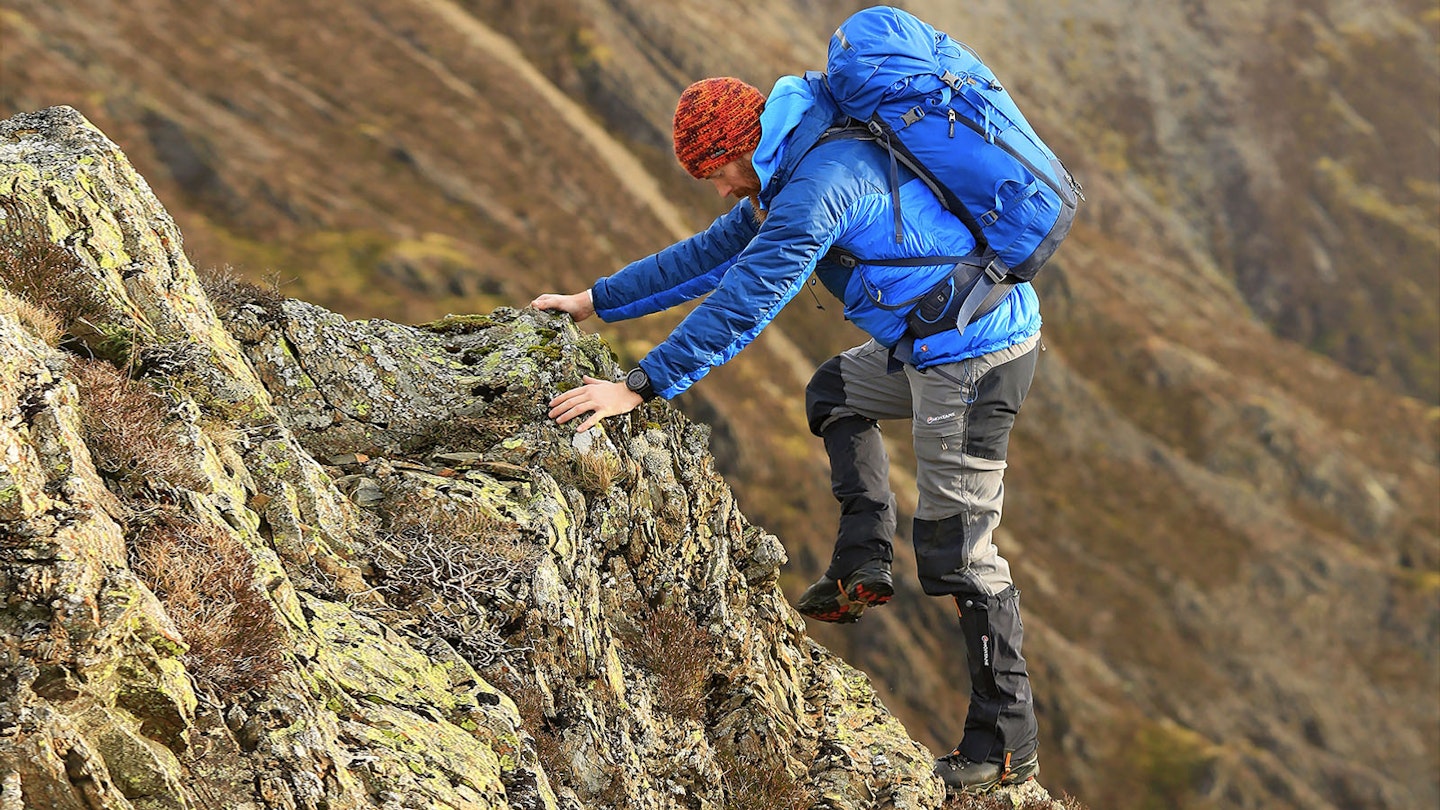
How should a lightweight insulated jacket it?
A lot of lightweight insulated jackets will have a leaner, more athletic fit than thicker jackets. This is because lightweight ones are usually designed for fast-paced outings where the wearer wants something where comfort and mobility are of equal importance to warmth.
Are lightweight insulated jackets durable?
Lightweight insulated jackets will usually be made from lightweight materials – go figure. This is great for breathability, comfort, and other important things, but durability can take a hit. All the lightweight jackets we’ve recommended here have the potential to last a very long time. But it does require the wearer to avoid being too rough.
What features should I look for in a lightweight insulated jacket?
Heat reflecting: A clever and useful feature to keep an eye out for with lightweight insulated jackets is heat reflective technology. This is where the inner fabric or lining has a finish that reflects body heat. It’s a great way to improve a jacket’s warmth-to-weight ratio.
Hood: It falls to your personal preferences as to whether you want a hood or not. Your head and neck are sensitive to cold (and heat), so a hood is a great help in that regard. But don’t forget about your beanie, and a hoodless insulated jacket is often easier to layer with.
Pockets: Beyond storage, zipped pockets with a mesh-lining can also be opened to improve ventilation. Make sure that pockets are still accessible even when wearing a rucksack with a hipbelt – many users like chest pockets for this reason.
Hem and cuffs: Look for elasticated hem and cuffs to ensure a closer fit, which helps to prevent heat loss and stops chilly draughts from creeping up your back or arms.
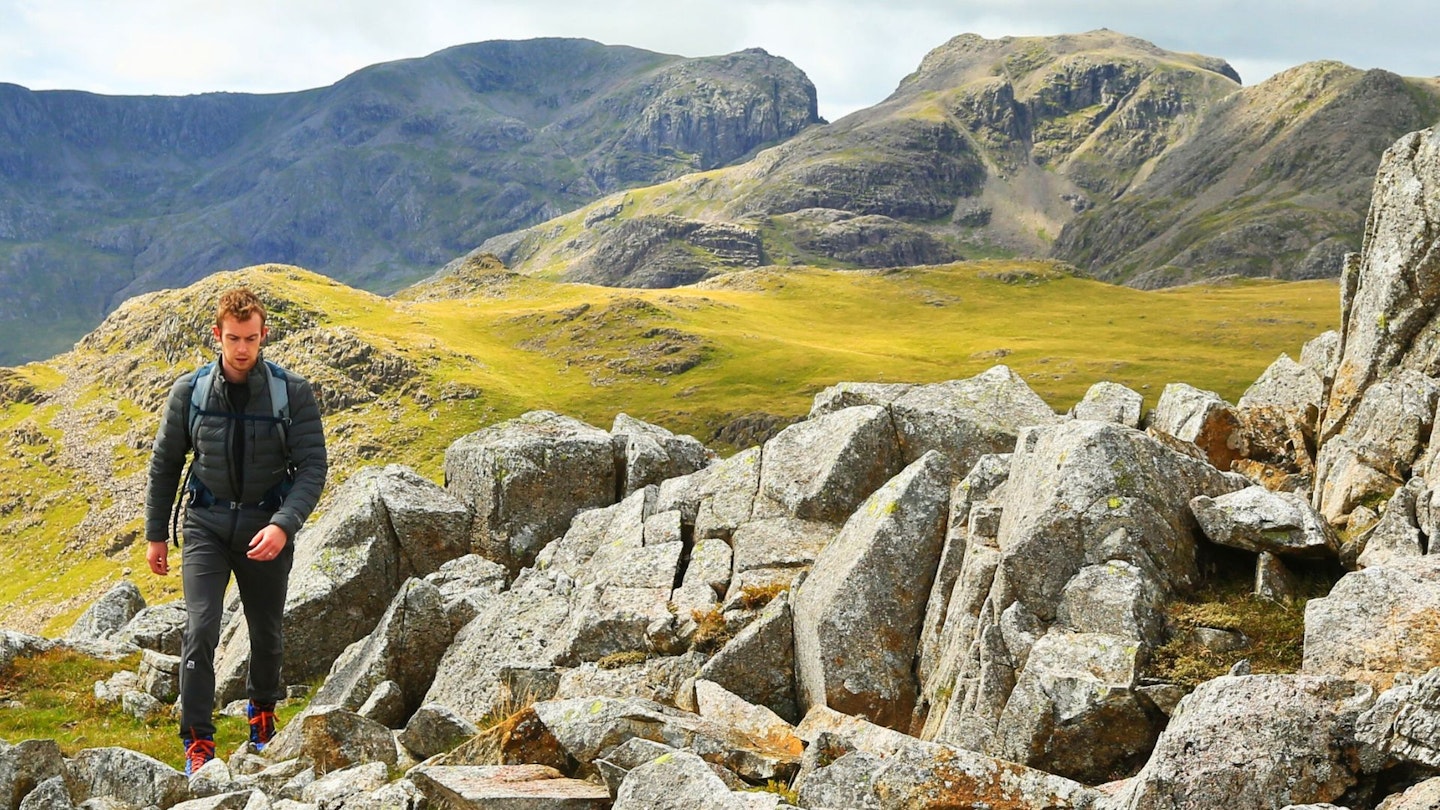
How to clean an insulated jacket
You can and should keep your insulated jackets clean by washing them as needed. Doing so keeps the fabrics and insulation free of dirt and sweat, which inhibit their ability to insulate.
You can wash insulated jackets either by hand or in the washing machine. But avoid using laundry detergent because it leaves behind residue that is detrimental to the jacket’s performance. Instead, use Grangers Down Wash (down or synthetic), or Nikwax Tech Wash if synthetic or Nikwax Down Wash.Direct if down. These clean effectively while rejuvenating breathability and water repellency.
Best down wash
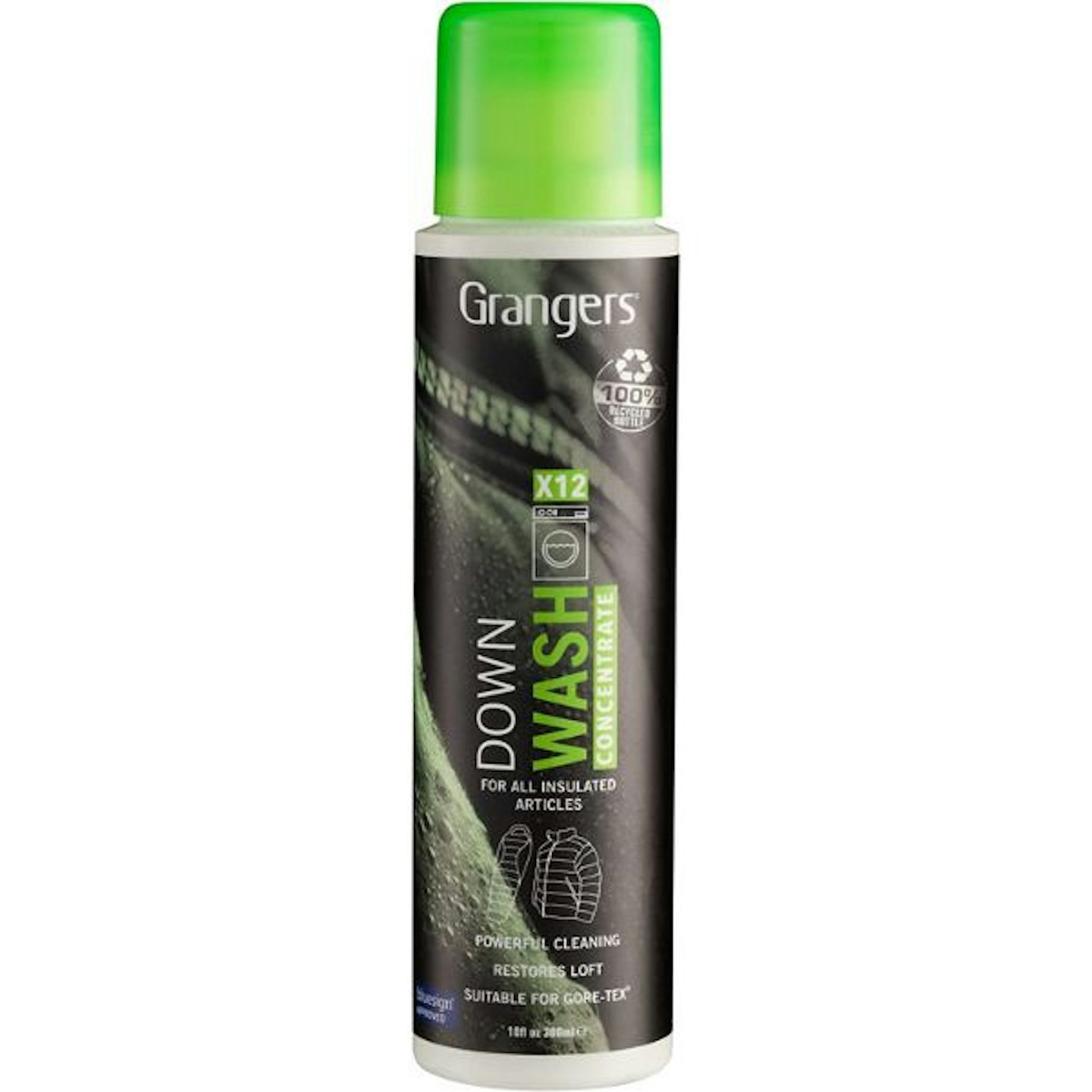
This specialist down wash is eco friendly and effectively cleans down-insulated gear while also restoring loft and breathability. The liquid is PFC-free, bluesign-approved and comes in a recycled bottle.
Pros
- Sustainable
- Concentrated formula
Cons
- None - don't be scared, it works!
Best down wash
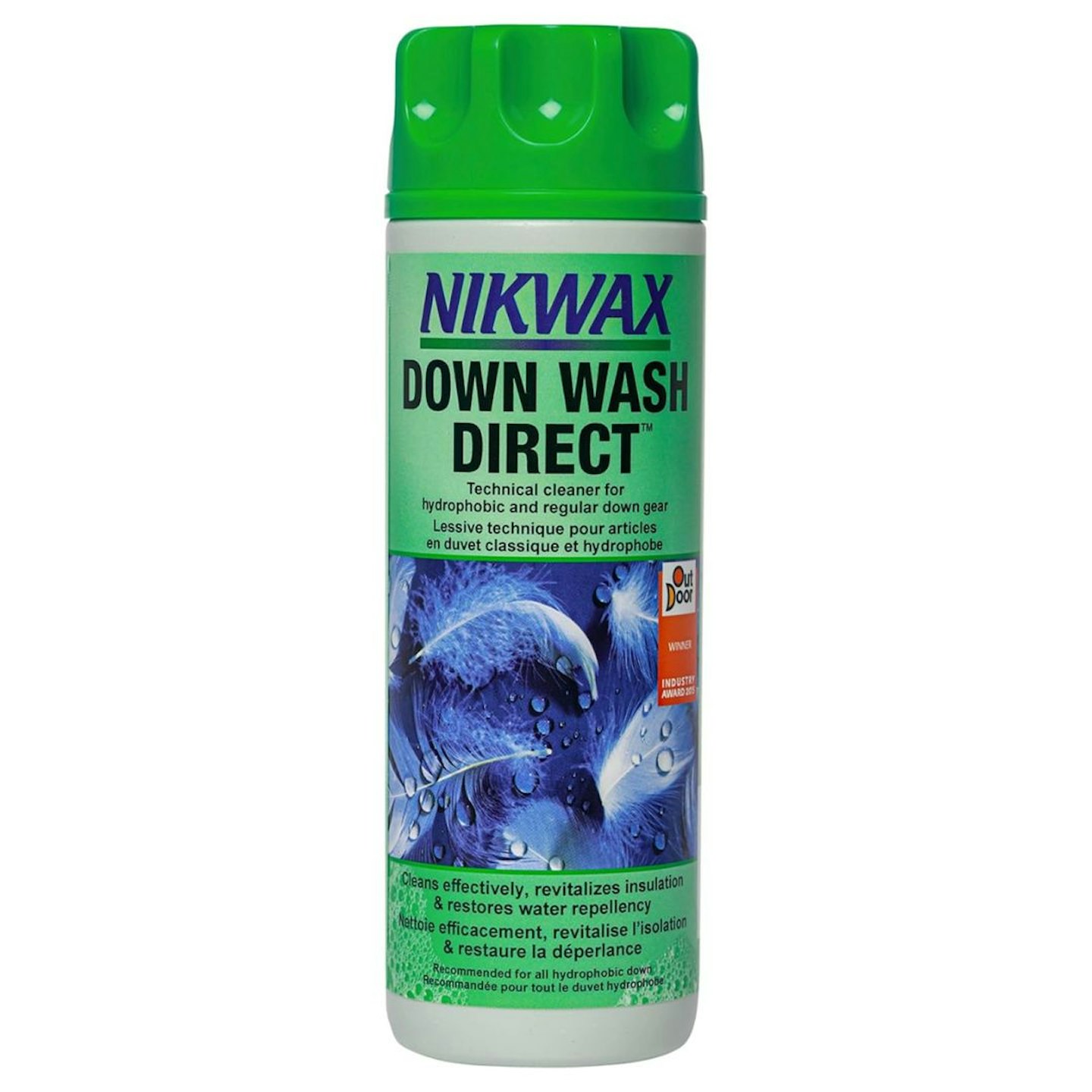
Nikwax Down Wash.Direct is very similar to Grangers' product. You can't go wrong with either. This is equally effective and also PFC-free. Priced here is the 300ml bottle but a larger 1L volume is also available.
Pros
- Effective
- Ecofriendly
Cons
- Less concentrated than Grangers
How to repair an insulated jacket
A wide range of brands and retailers offer repair services for gear. For insulated jackets this covers most things, from tears to zips to Velcro cuff replacements. Make use of these services, you can invariably book these online. It’s great value for you and a very important aspect to sustainability.
Don't forget to subscribe to the Live For The Outdoors newsletter to get expert advice and outdoor inspiration delivered to your inbox.
For the latest reviews - including extra photos and kit that won't appear online - pick up a copy of the current issue of Trail Magazine.
Chris Williams is a Digital Content Writer for Live For The Outdoors. He trained as a journalist in New Zealand and has been working on Live For The Outdoors since 2021.
